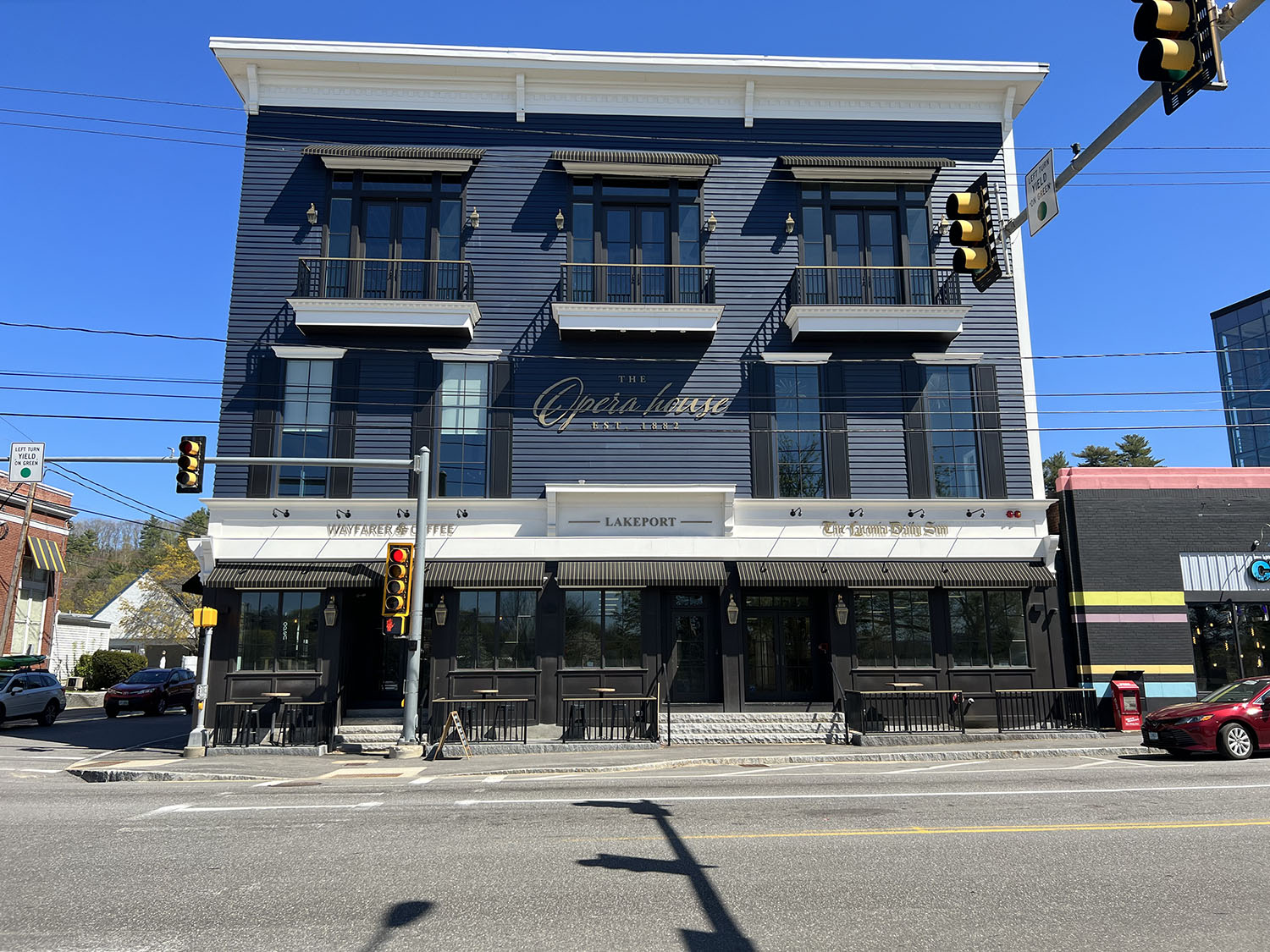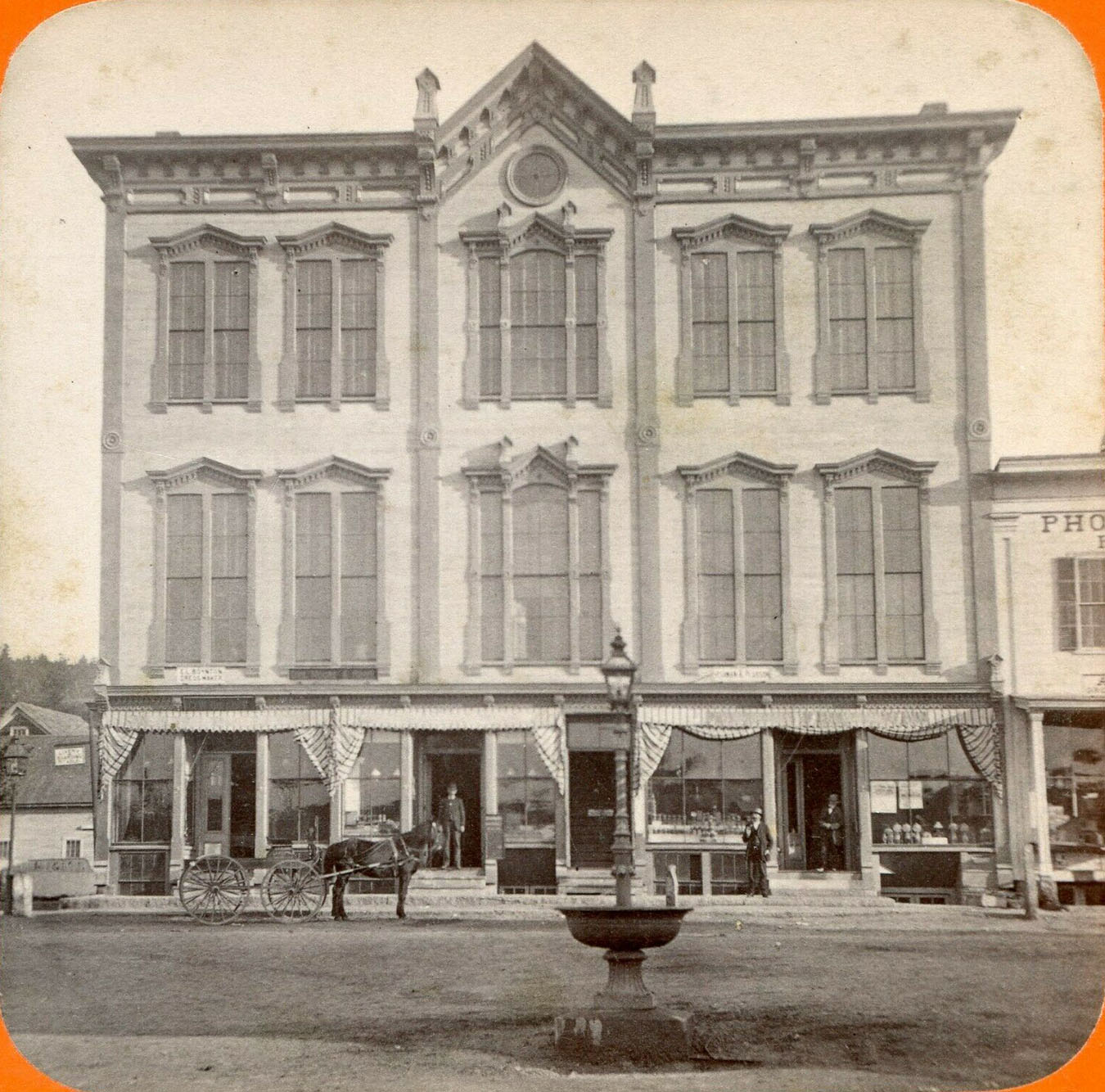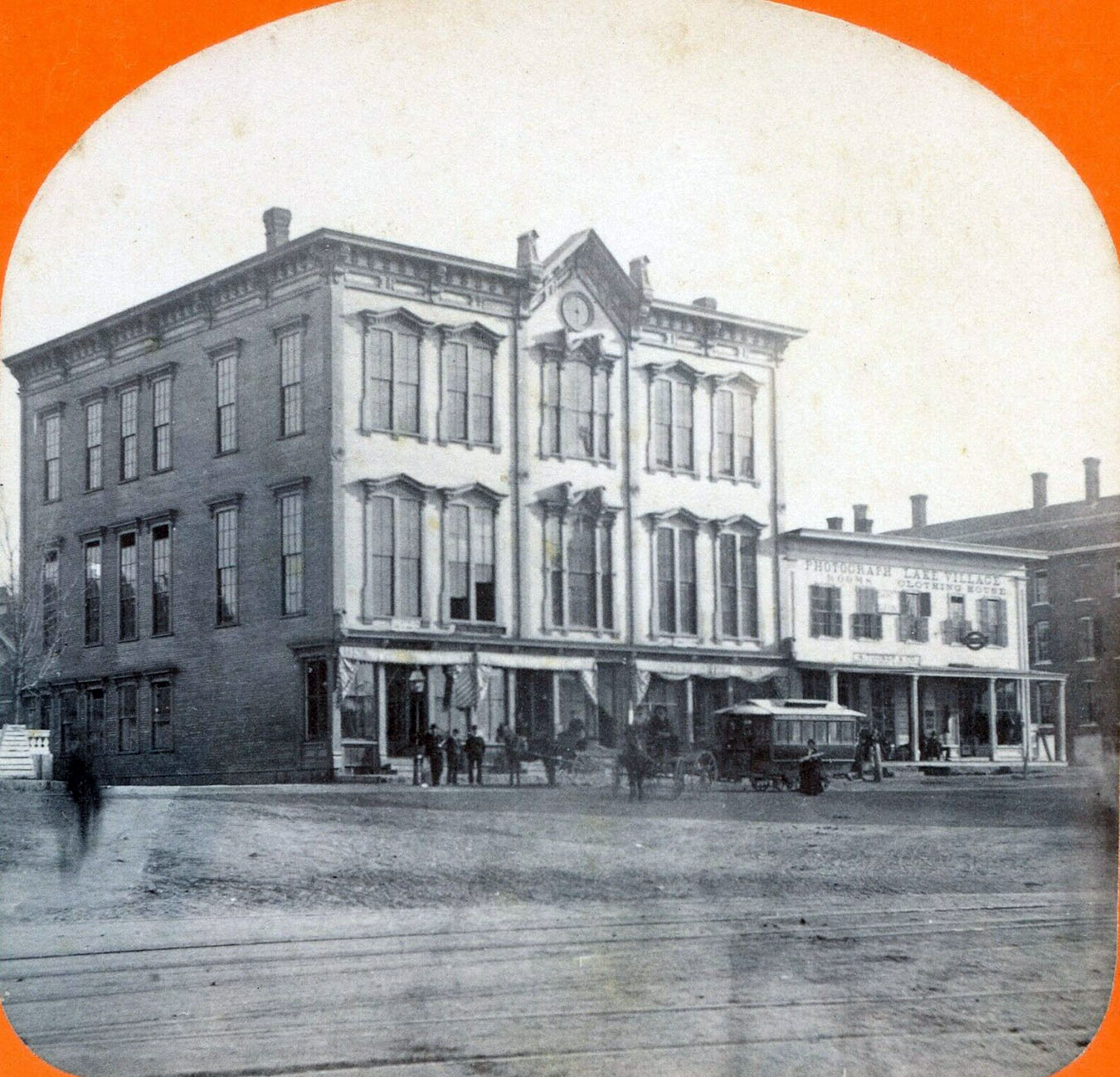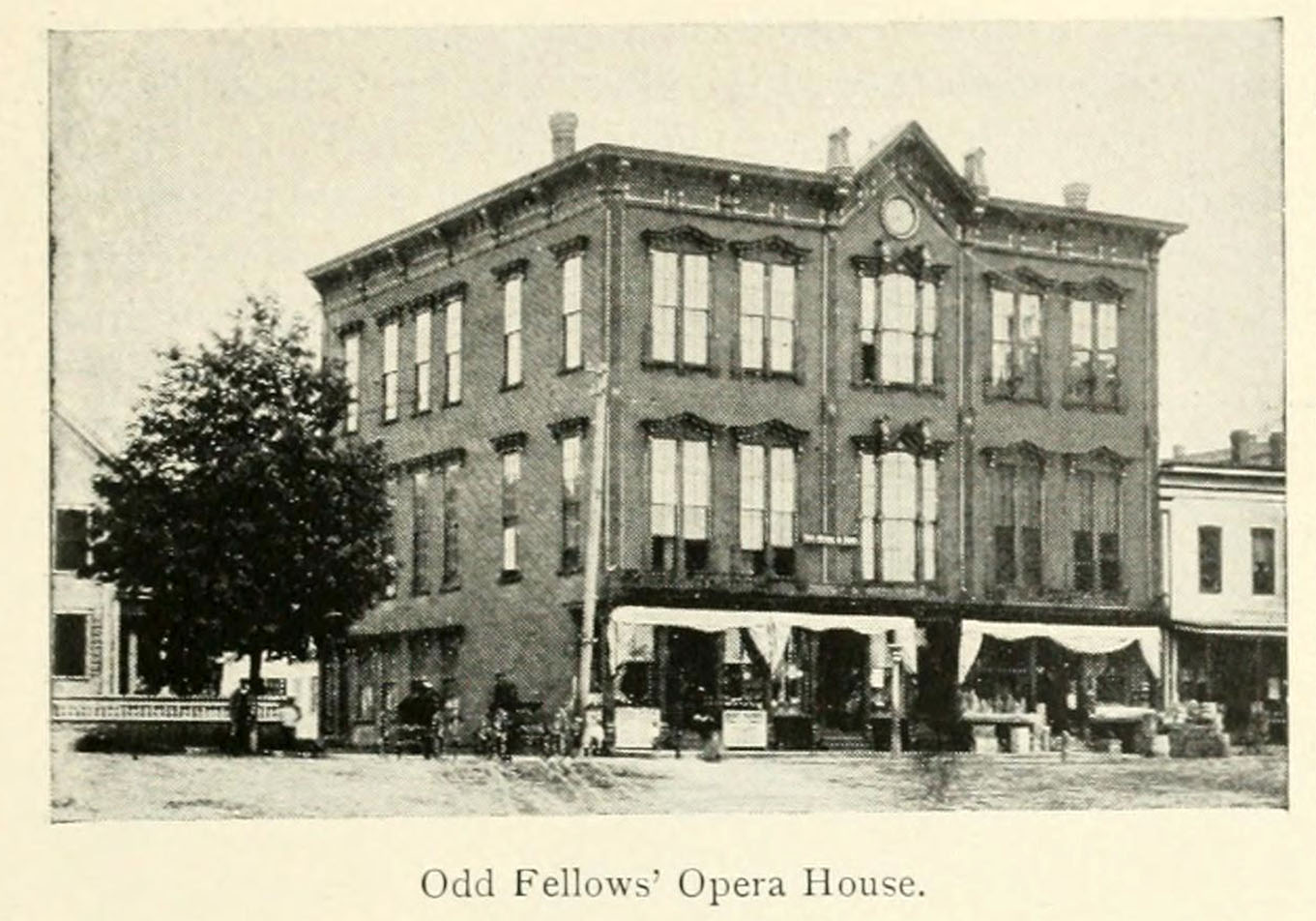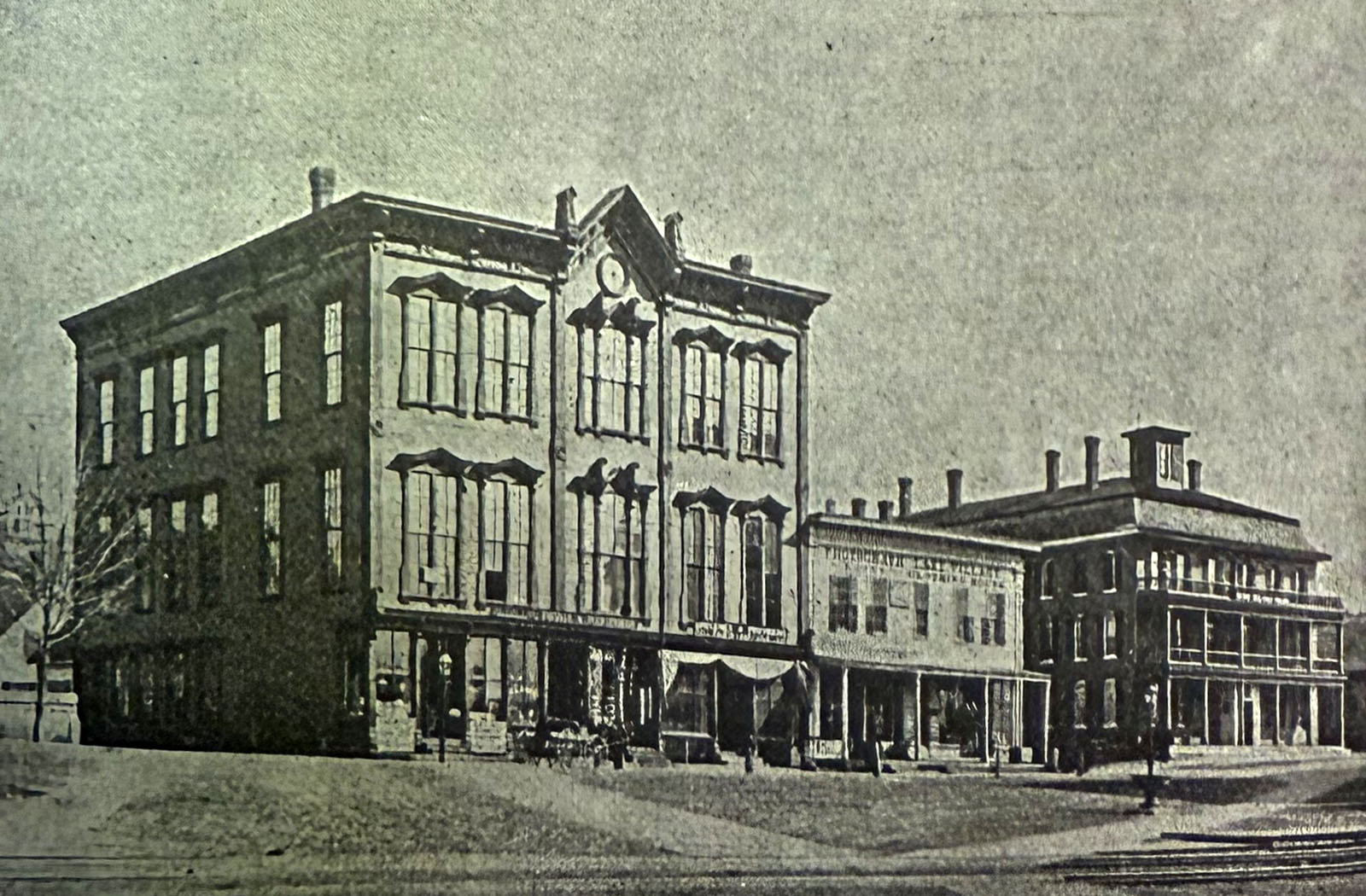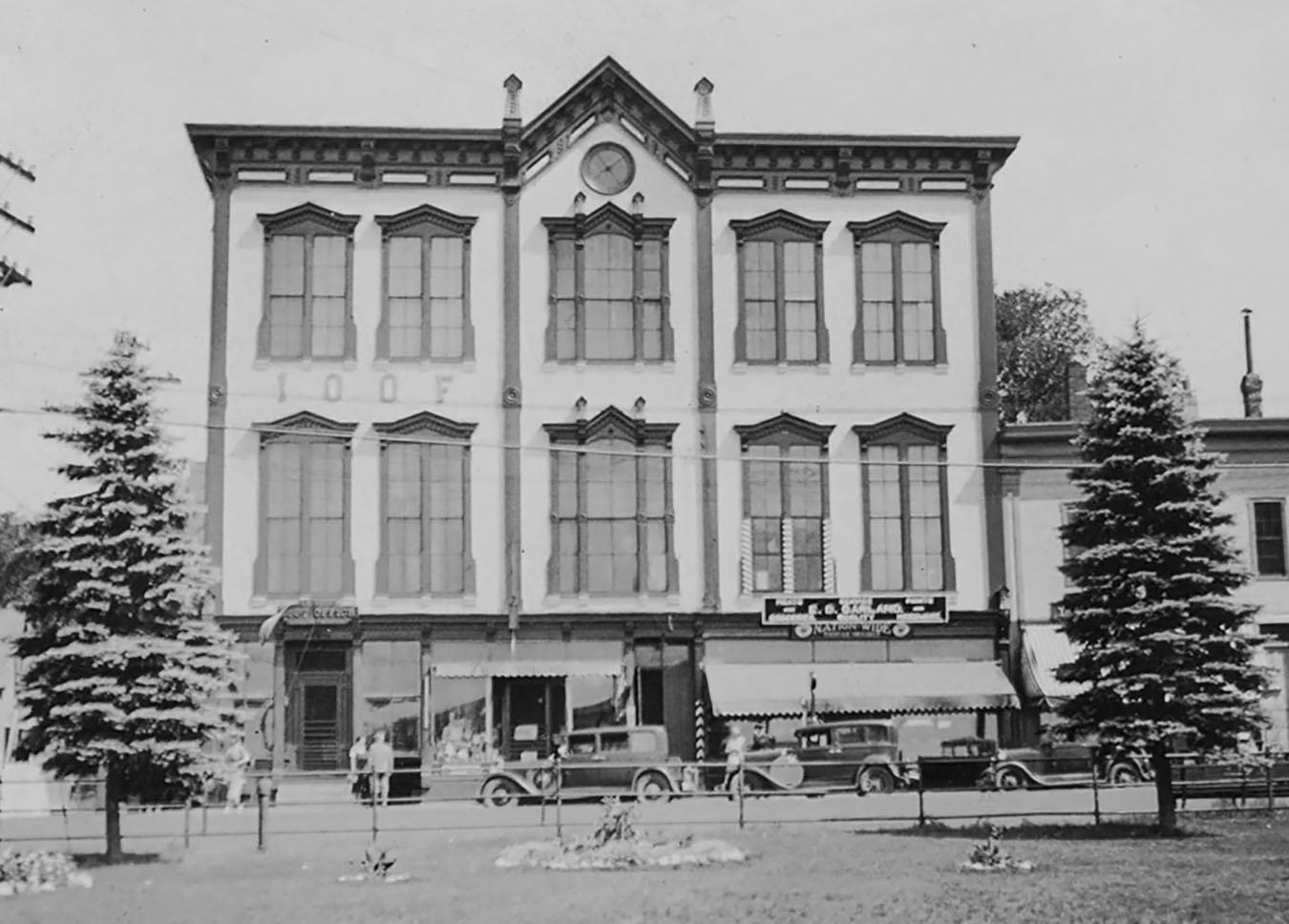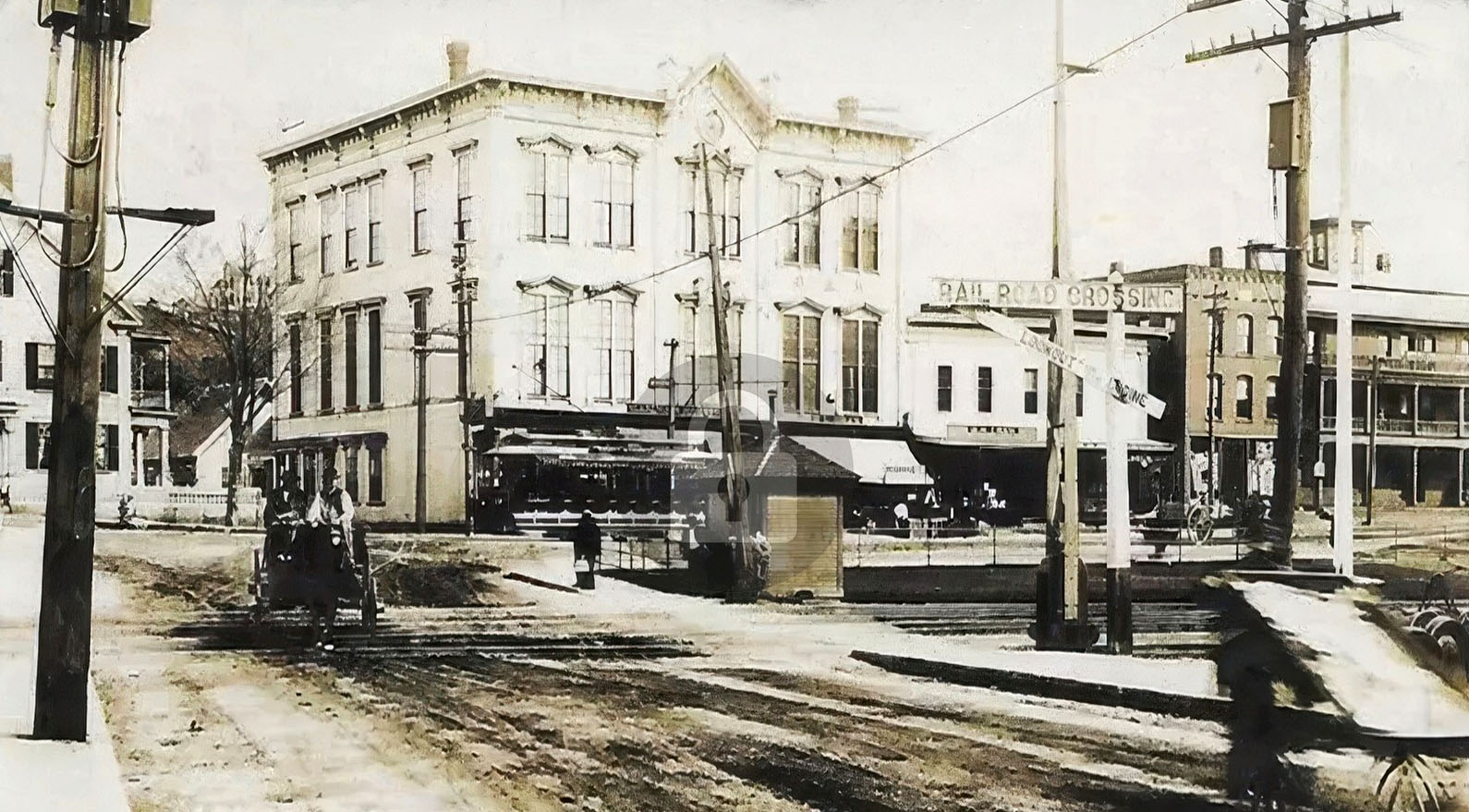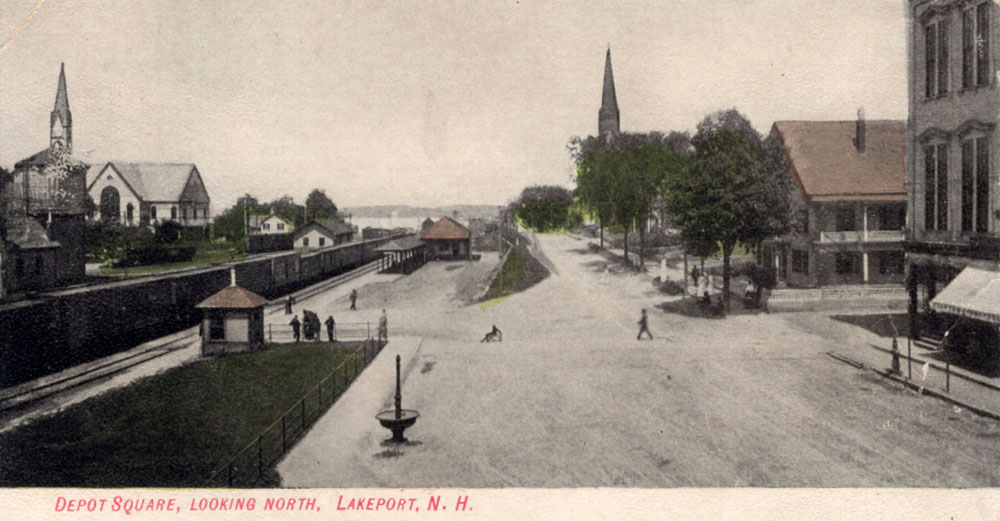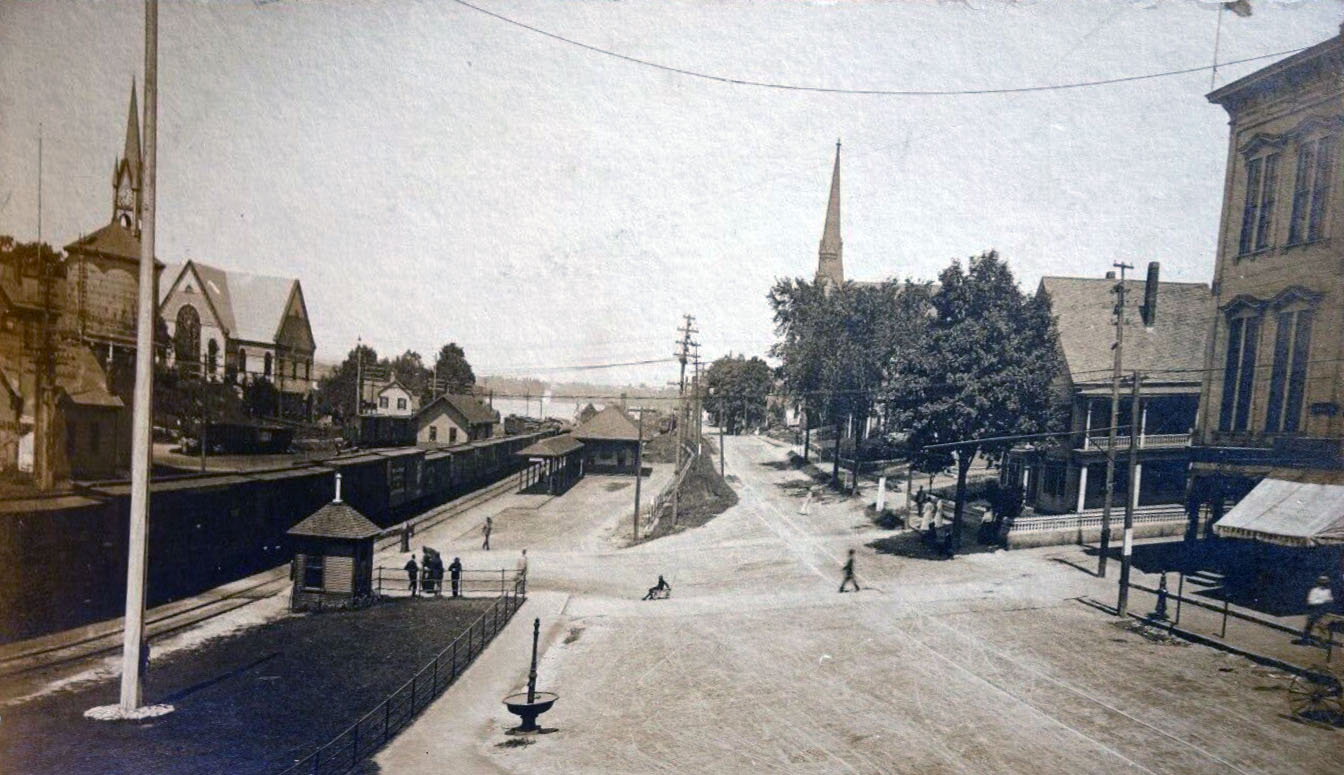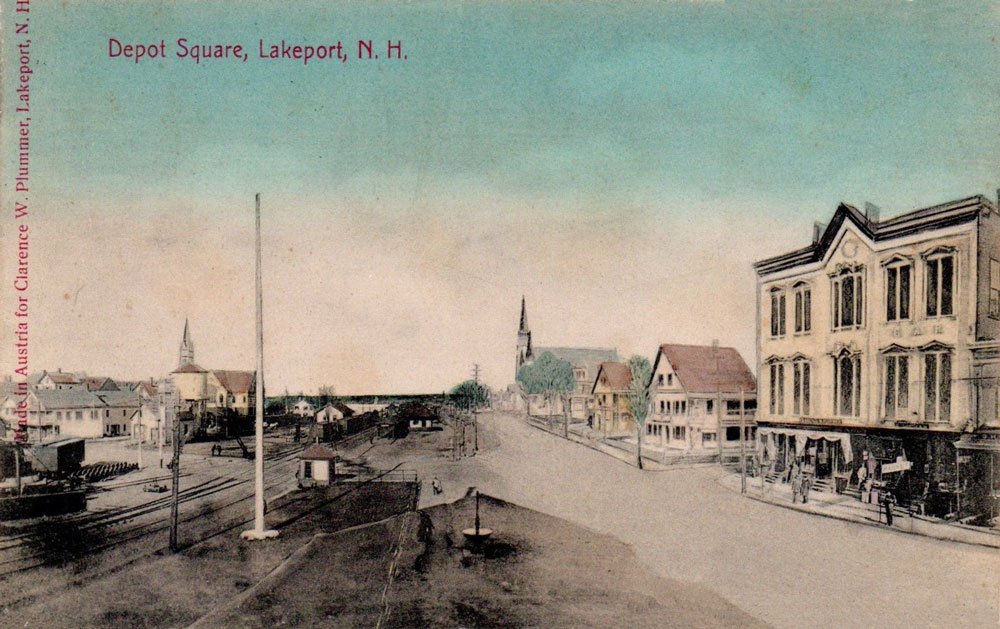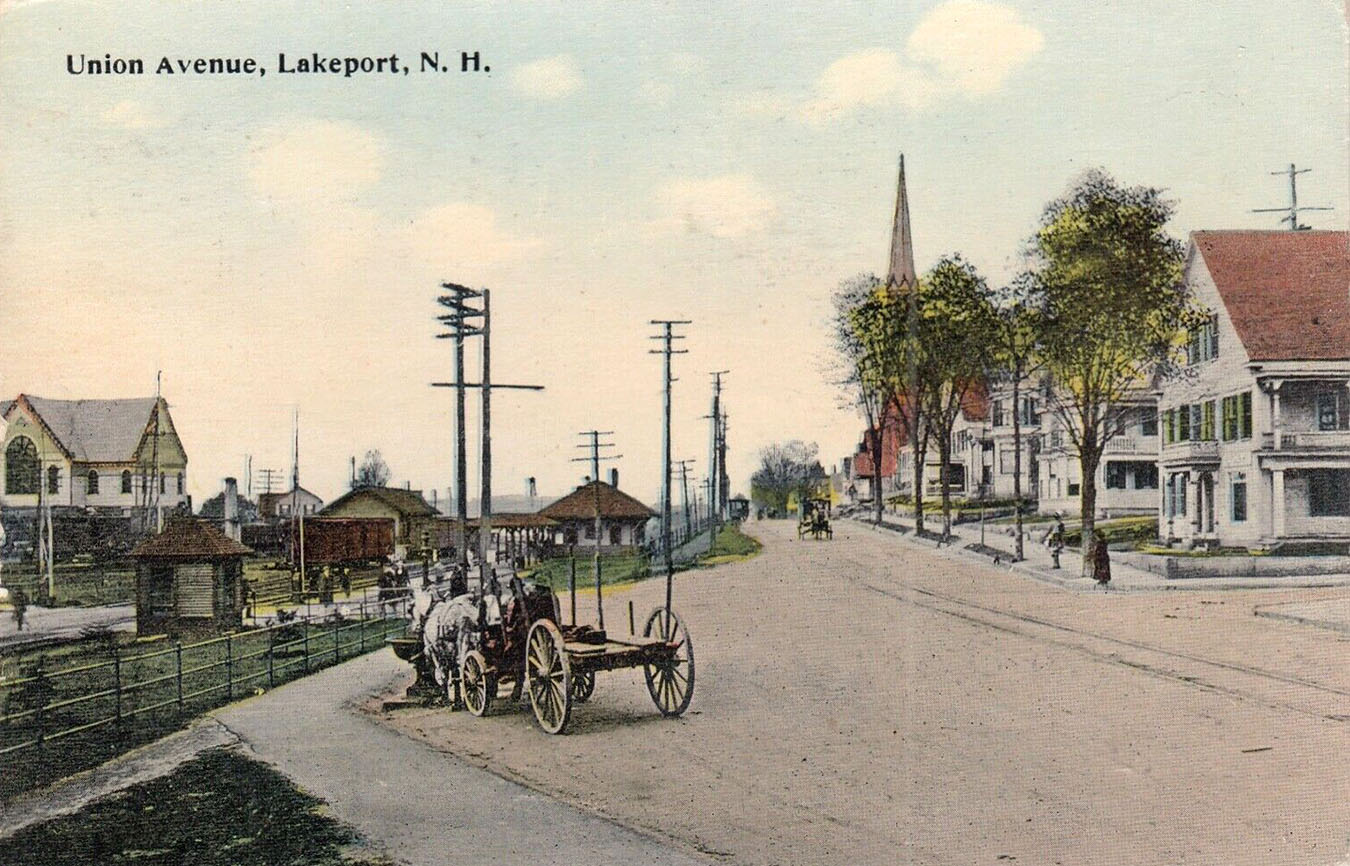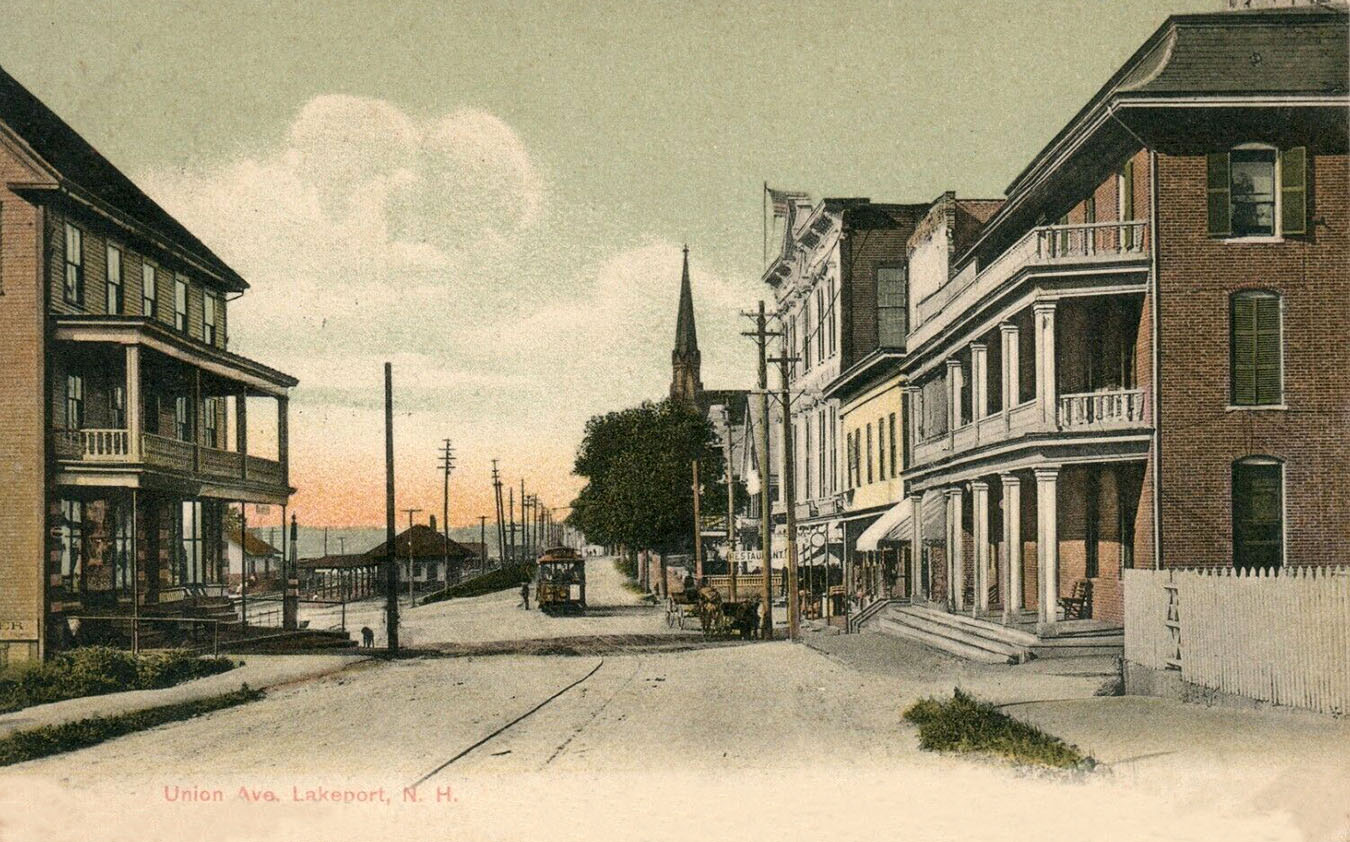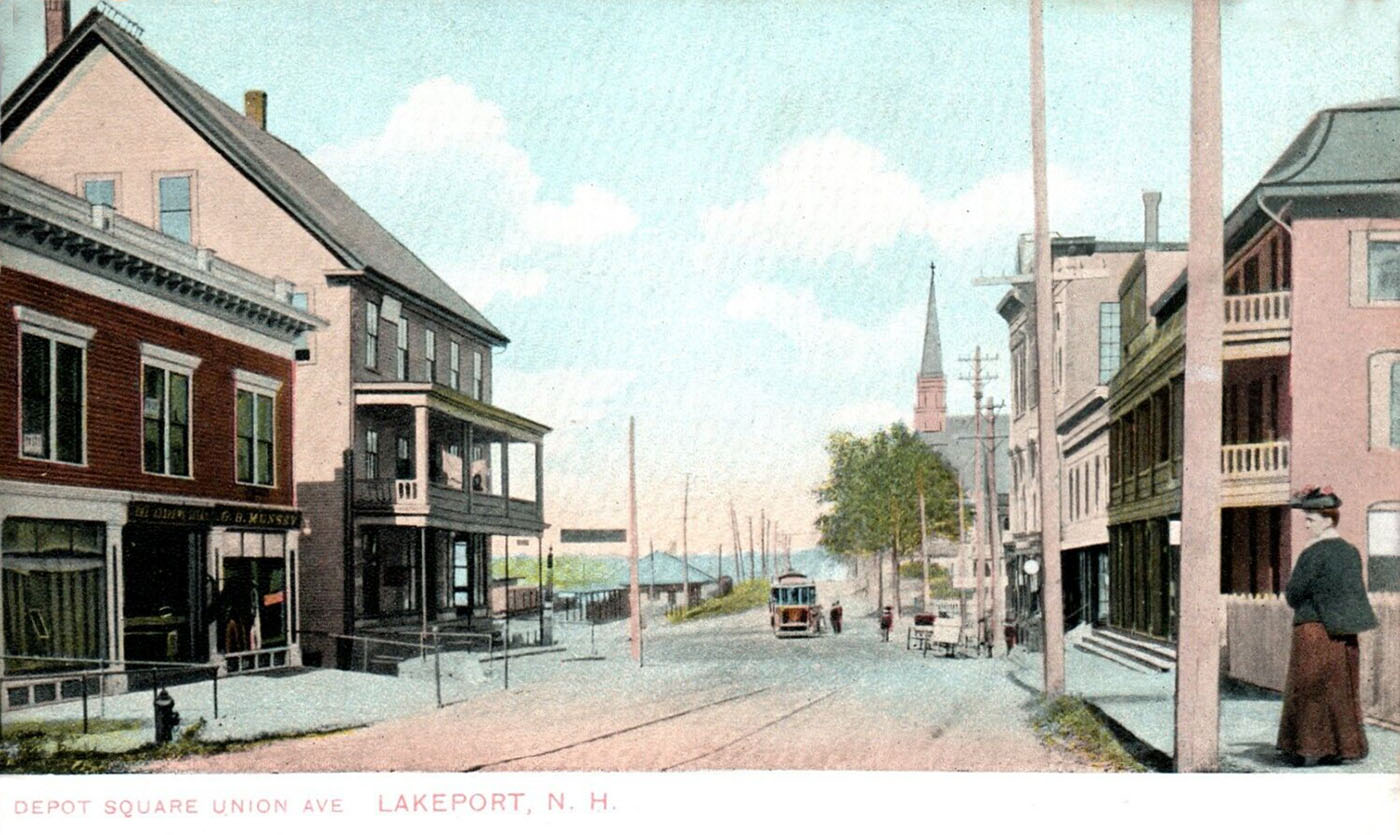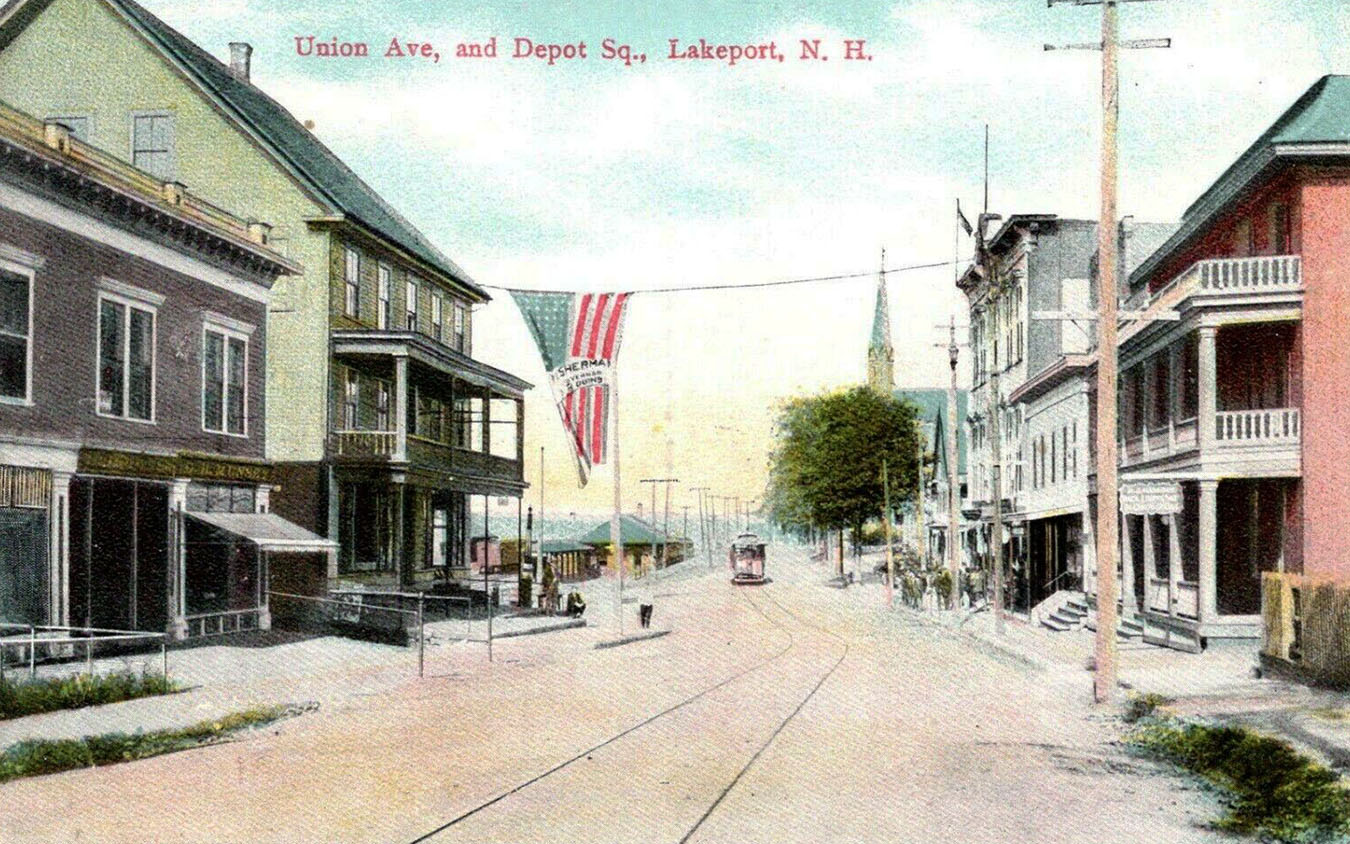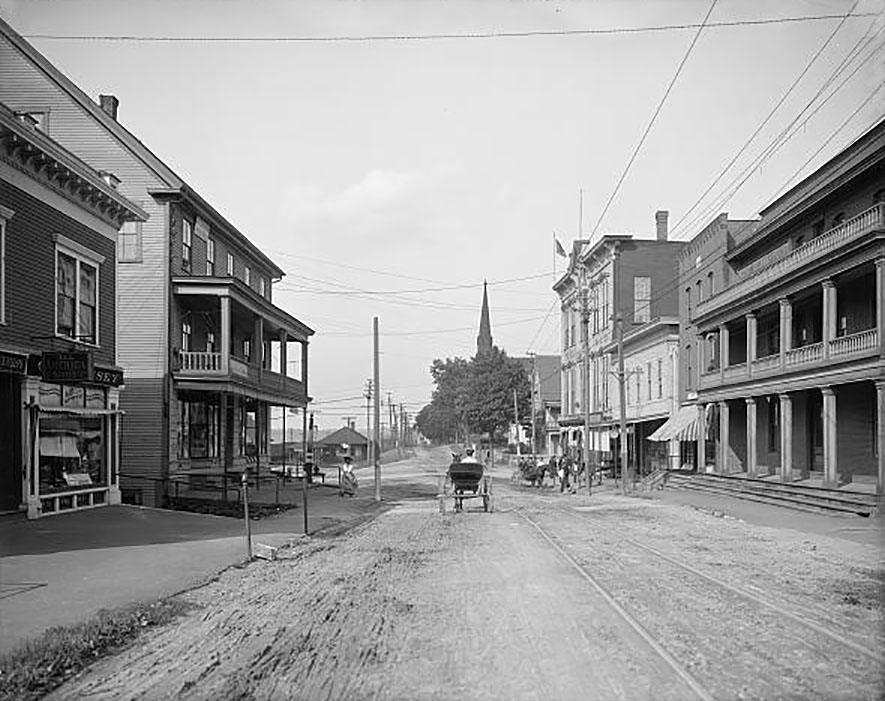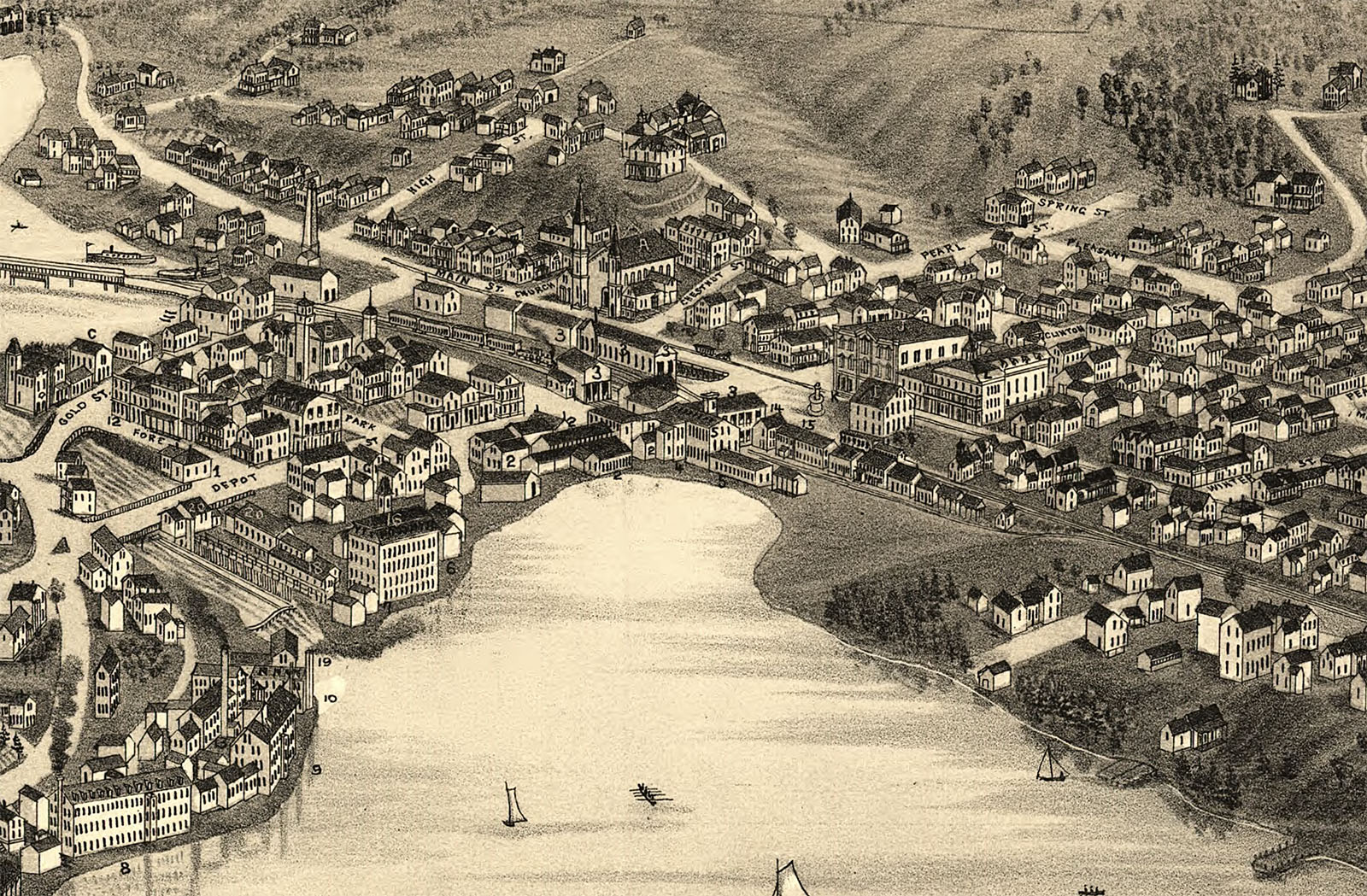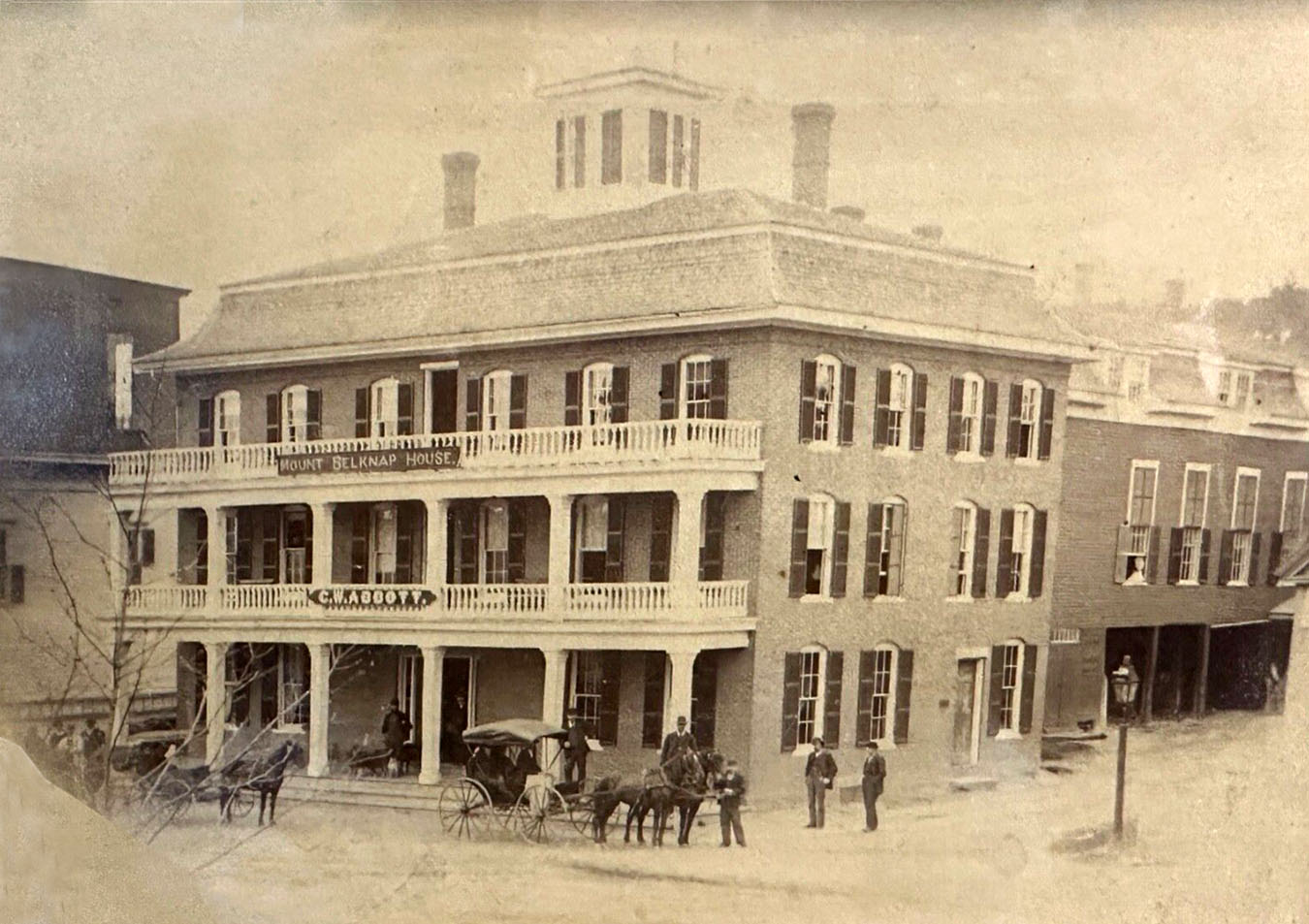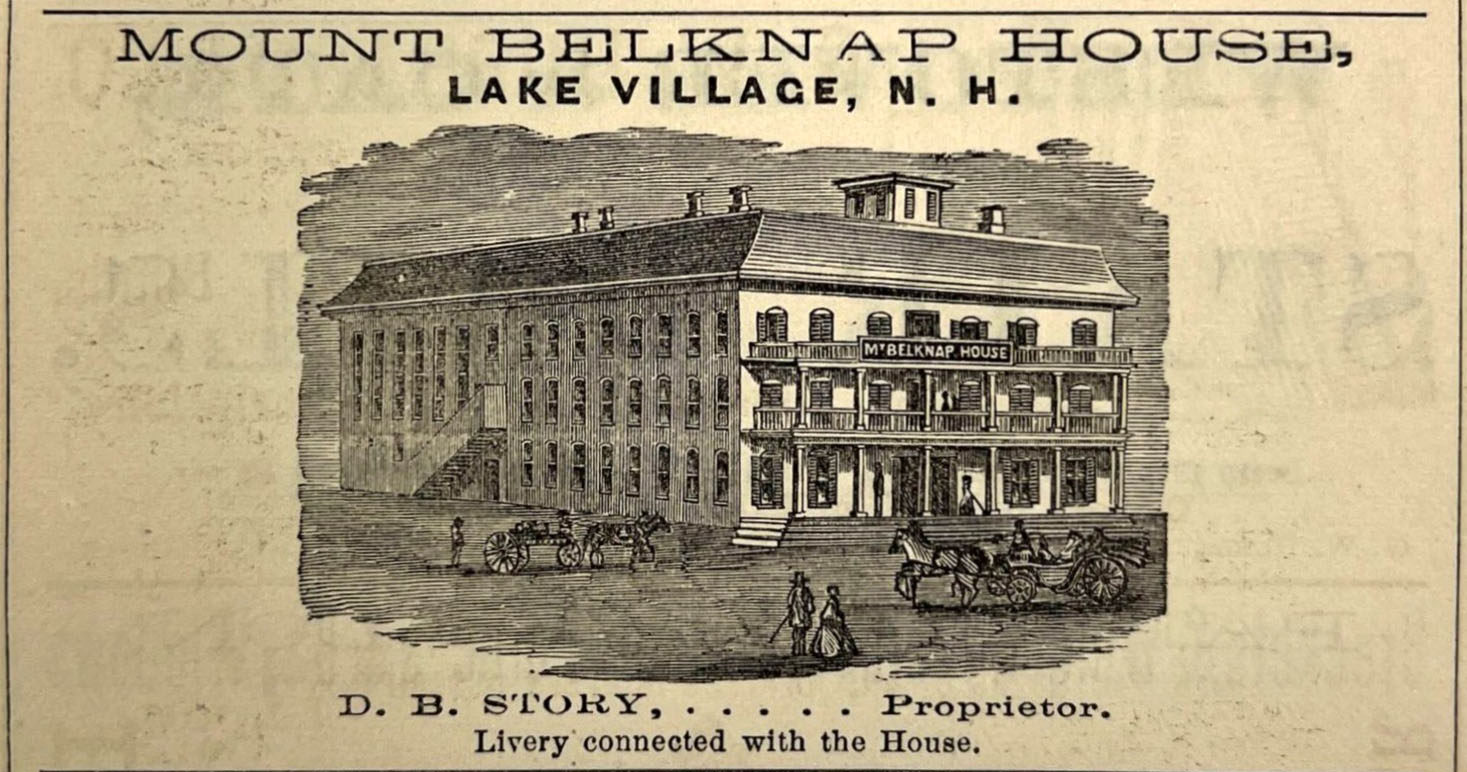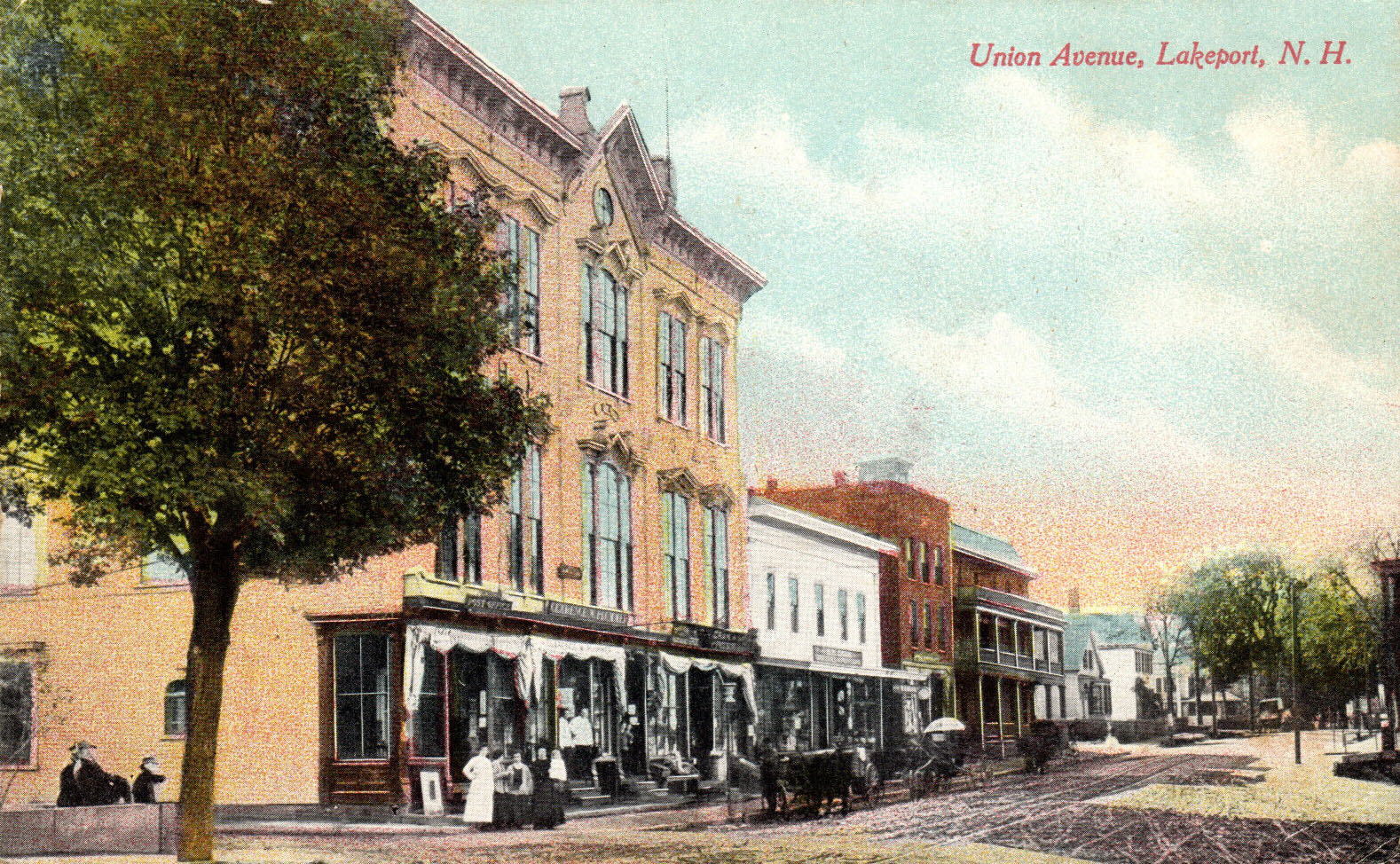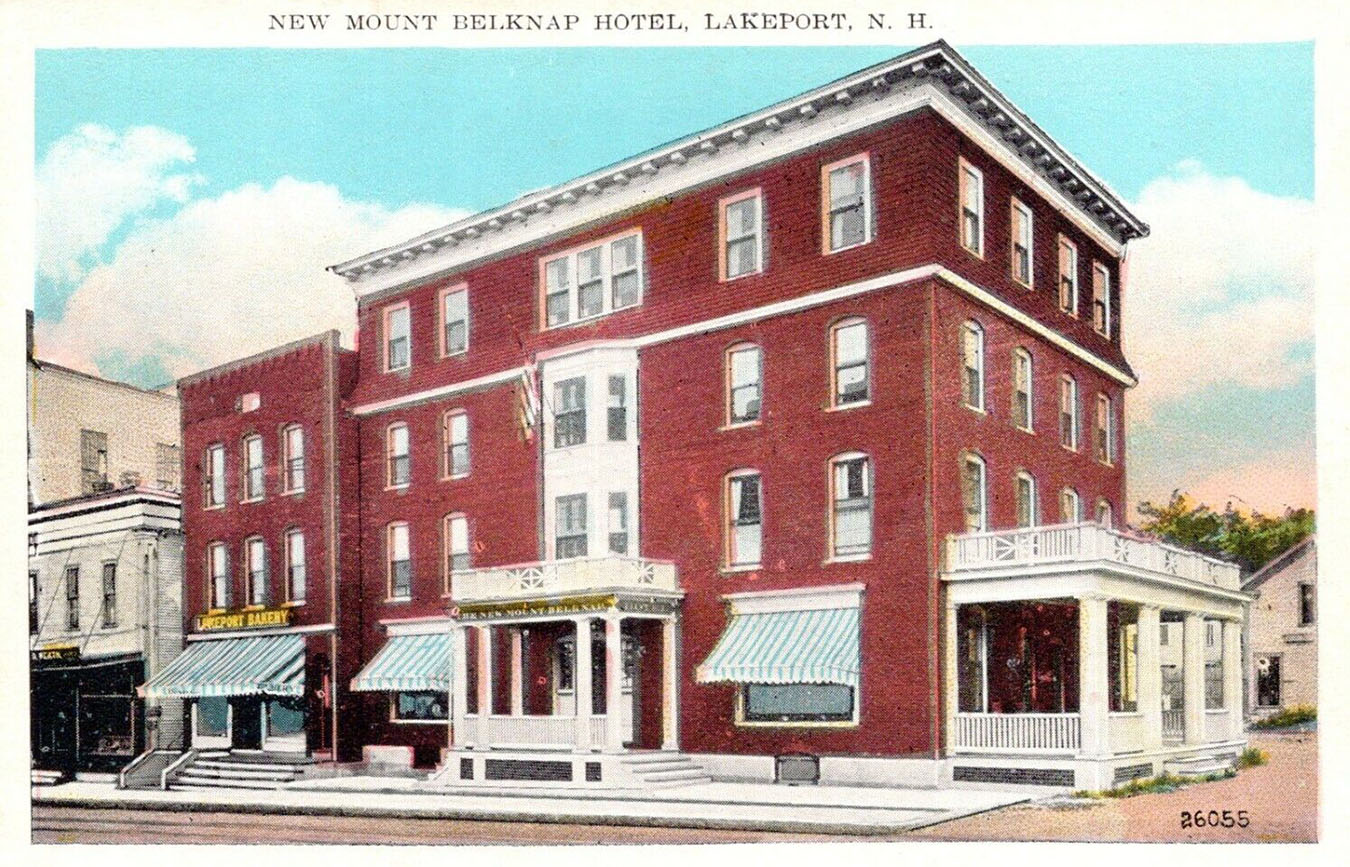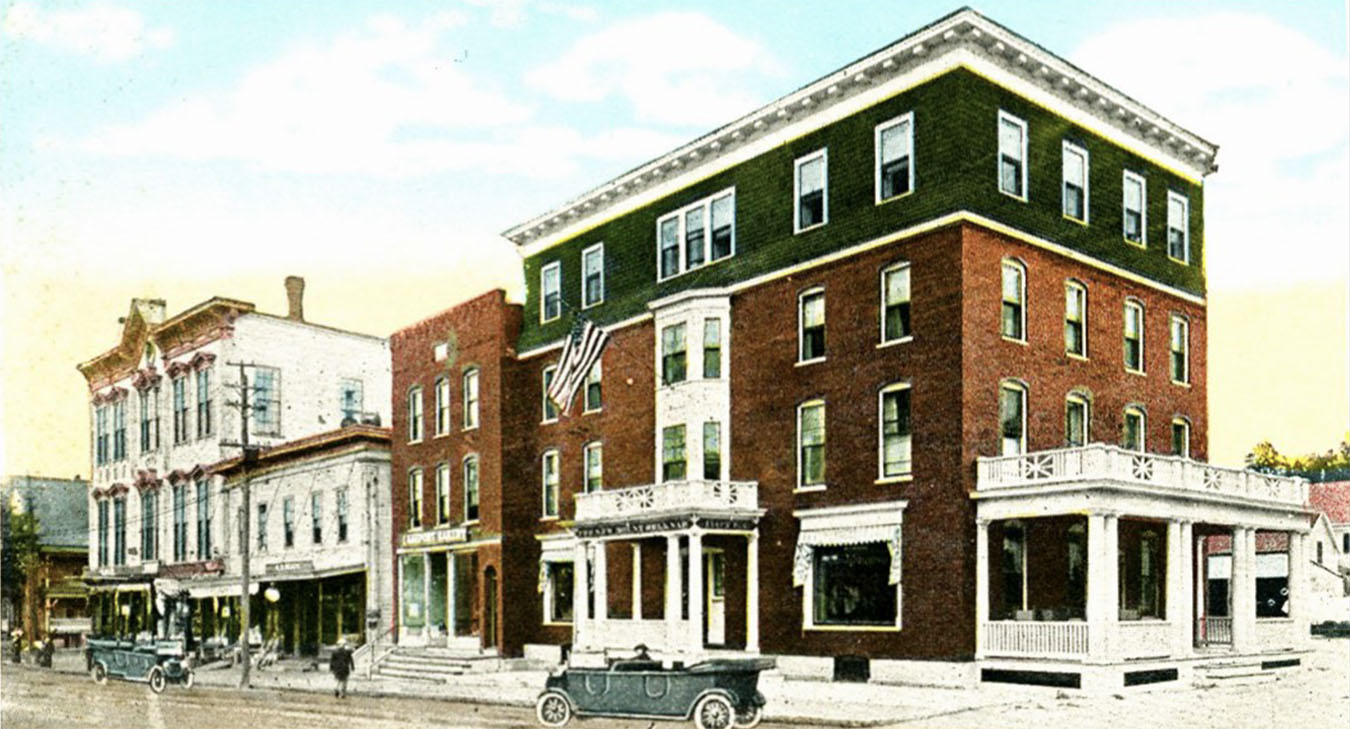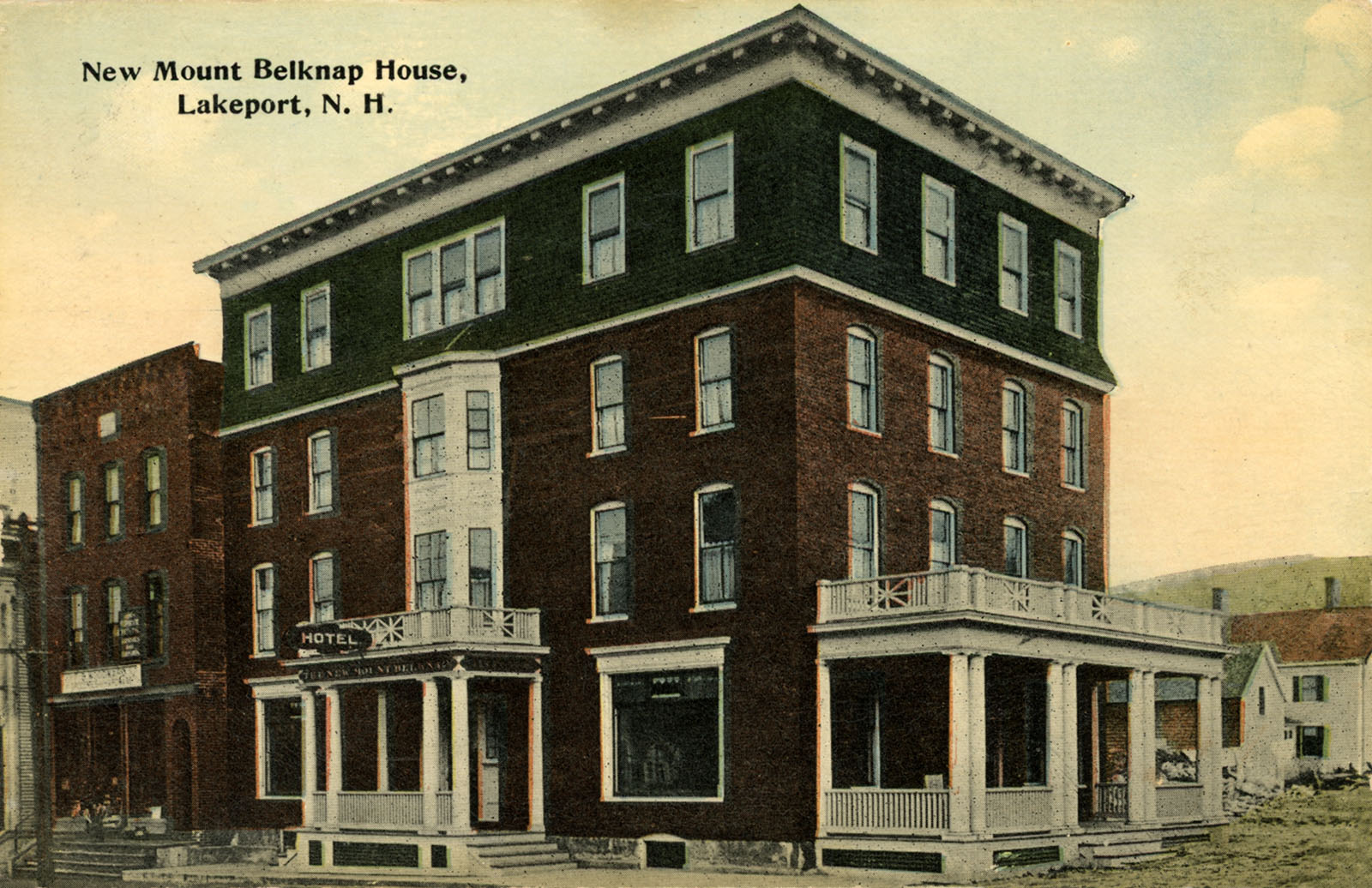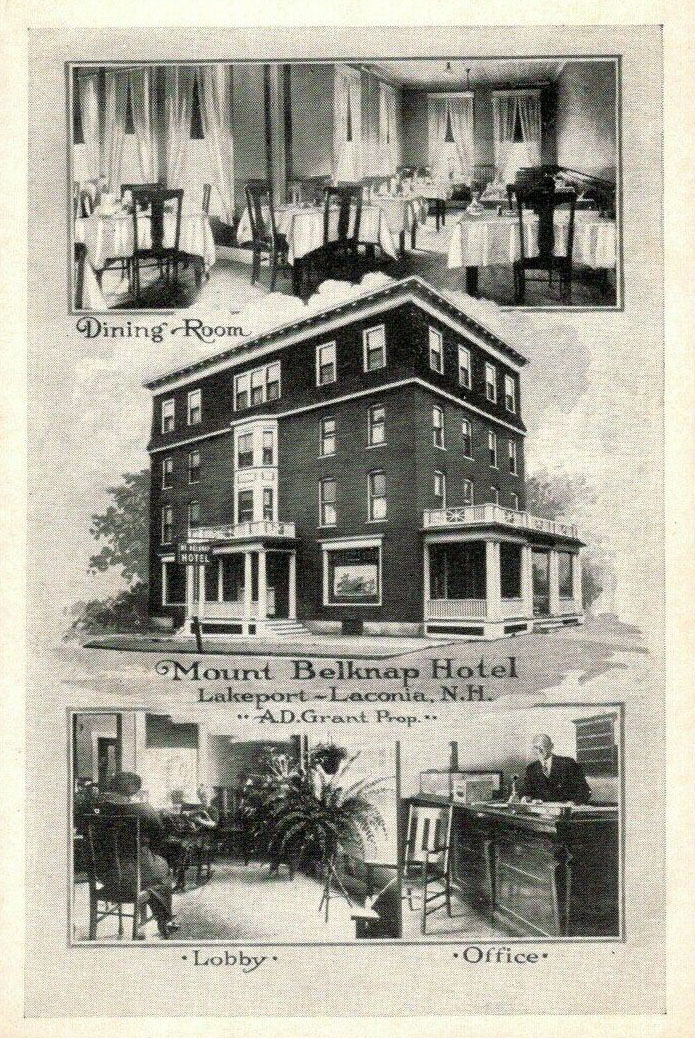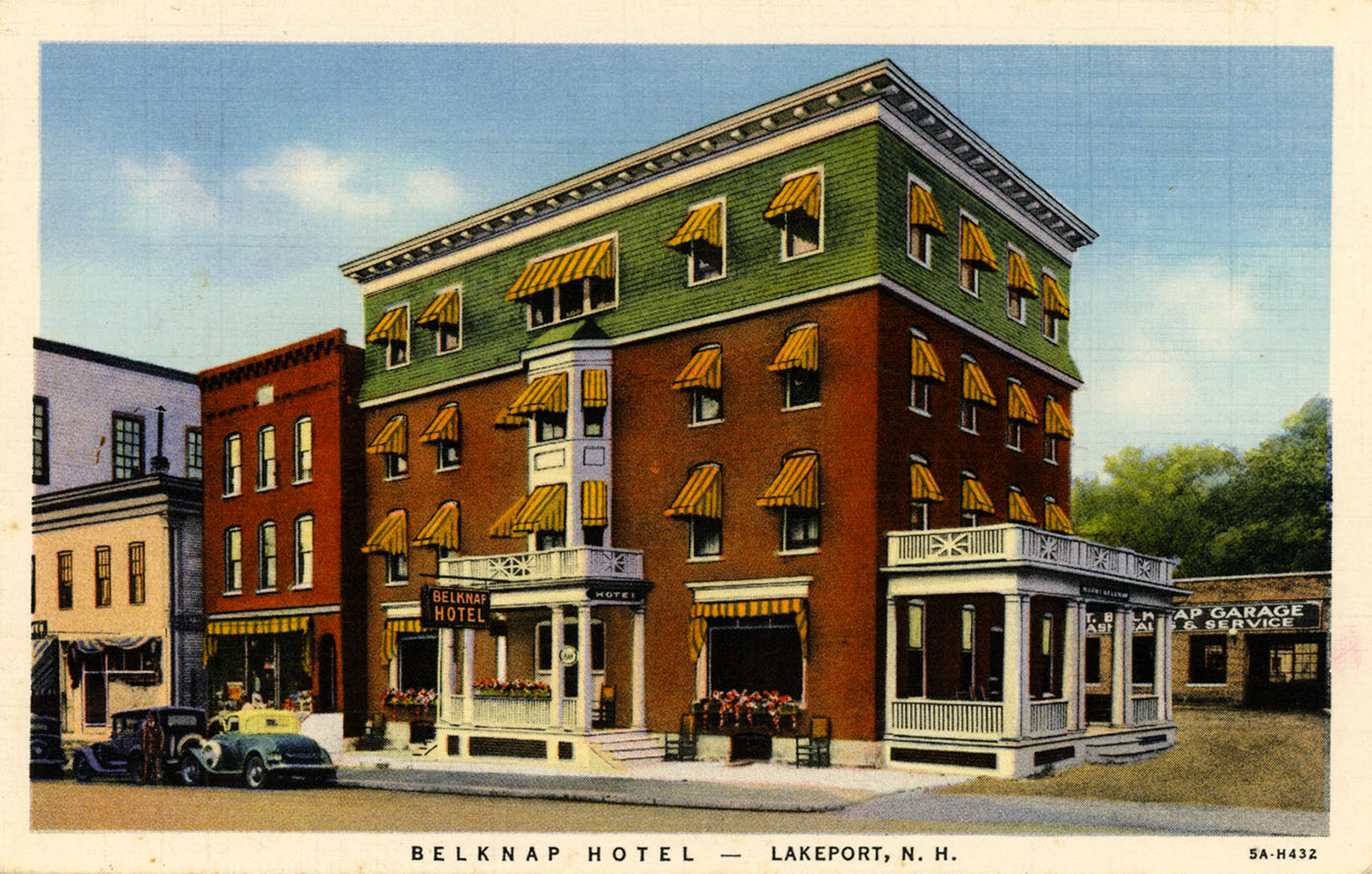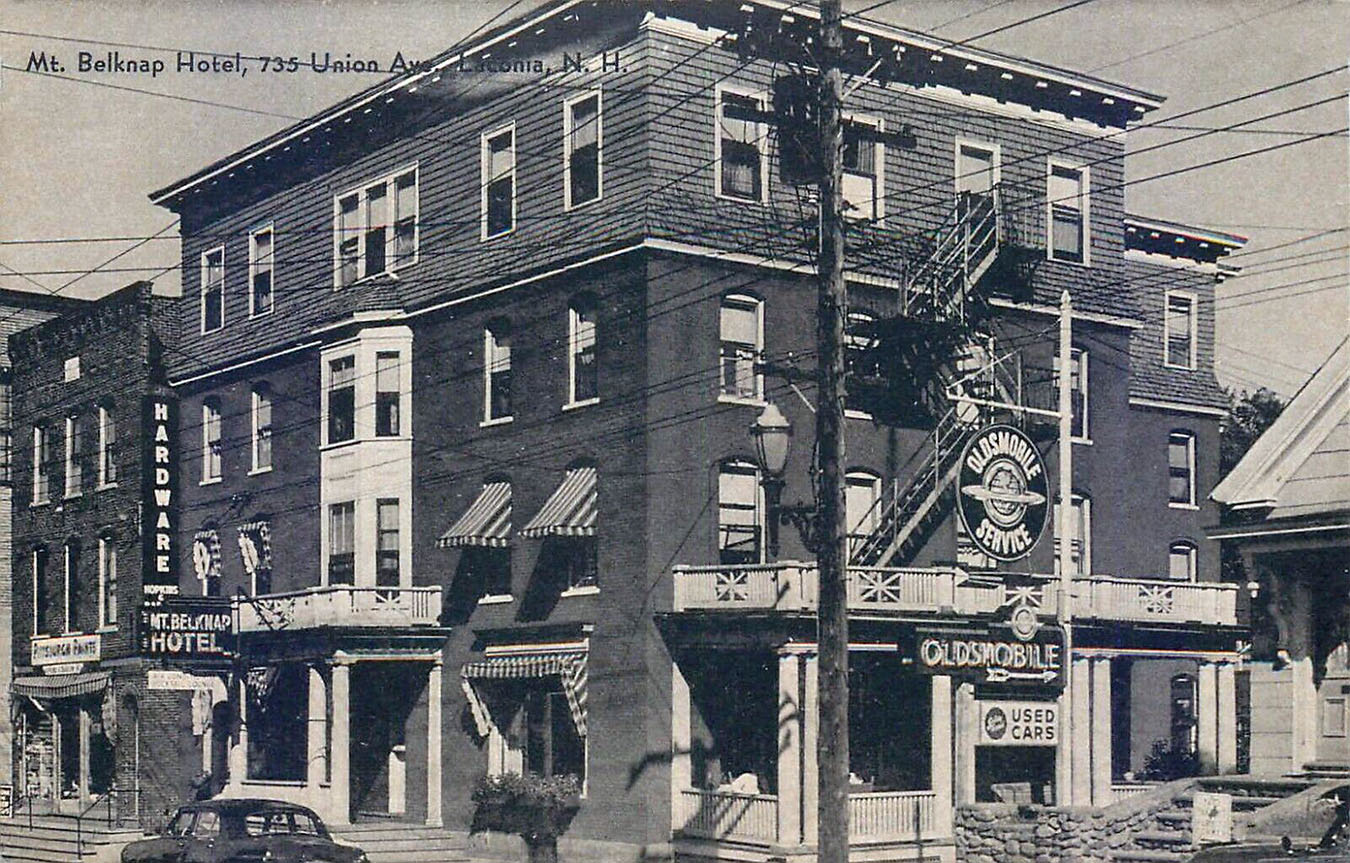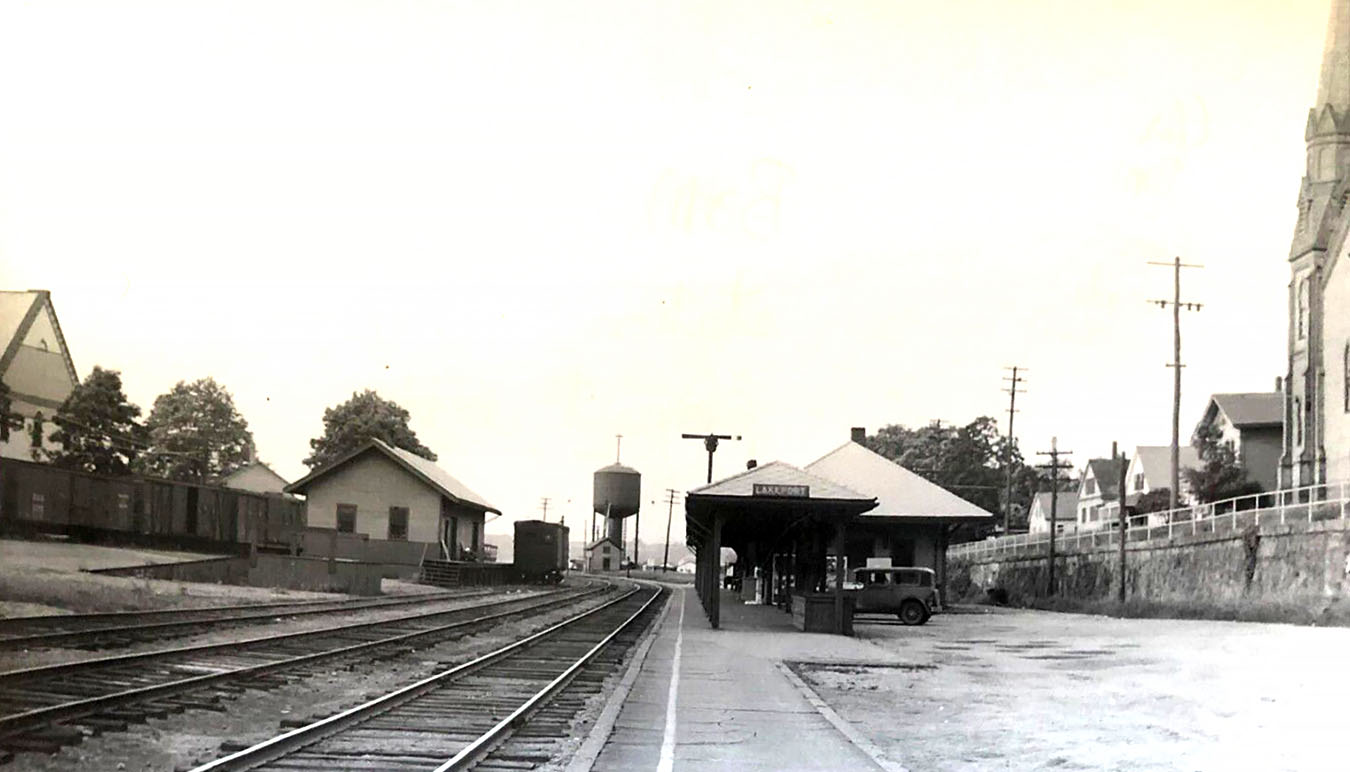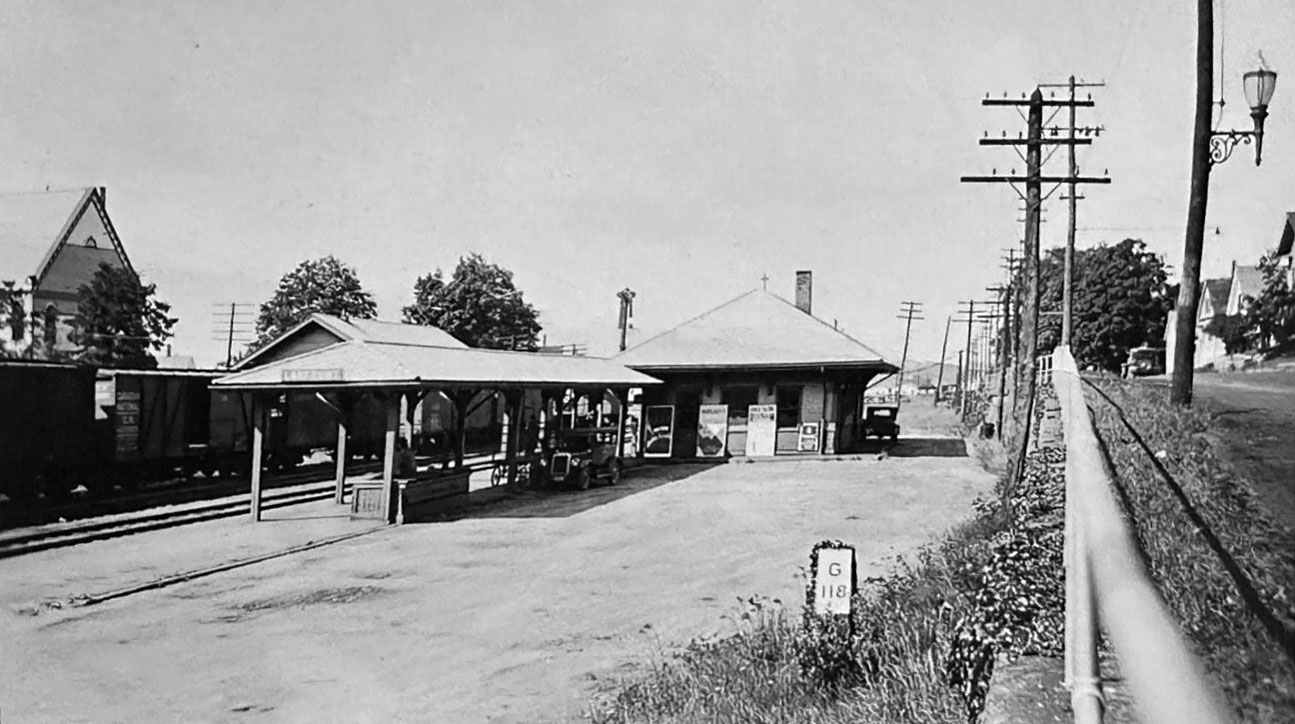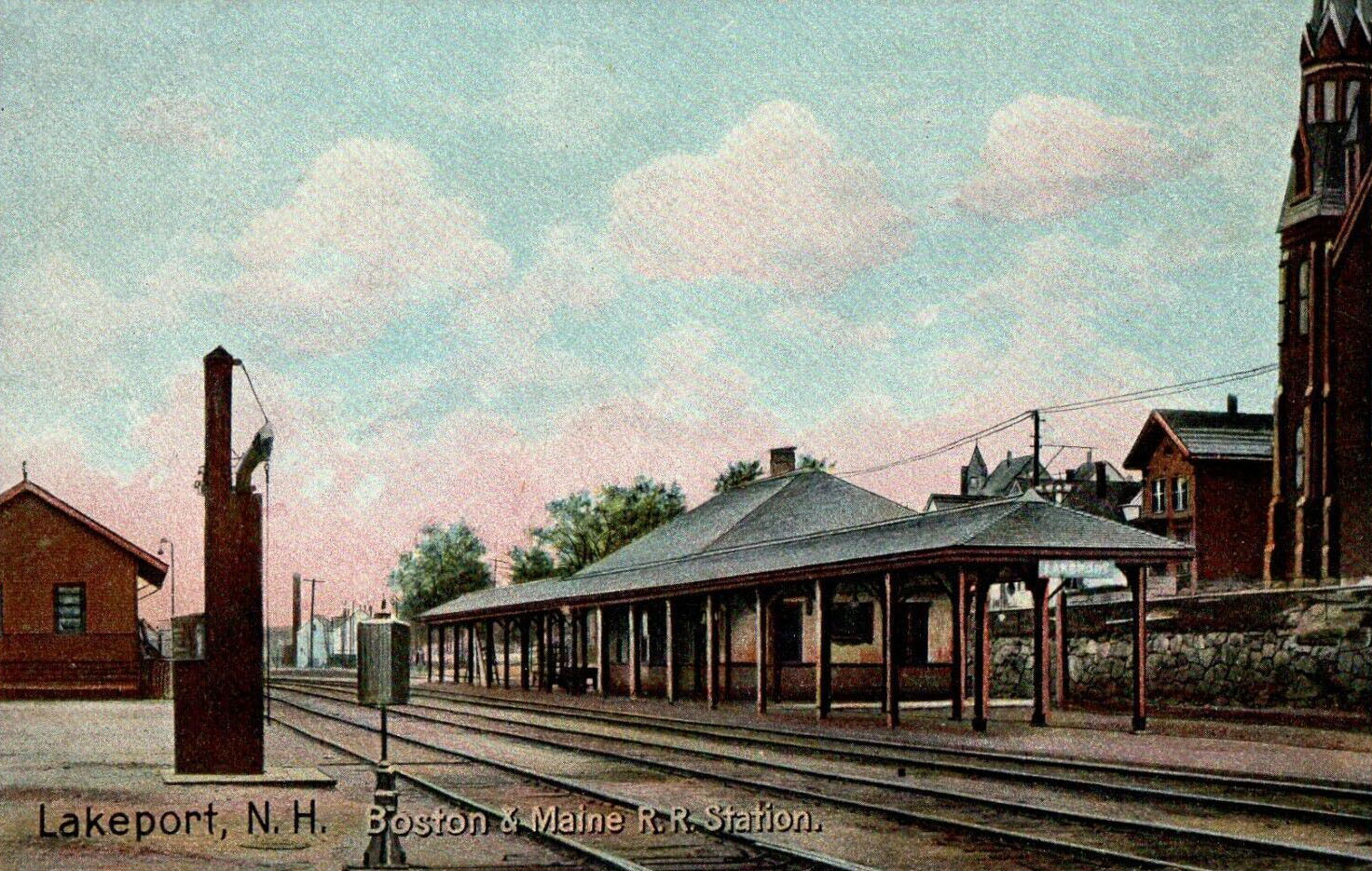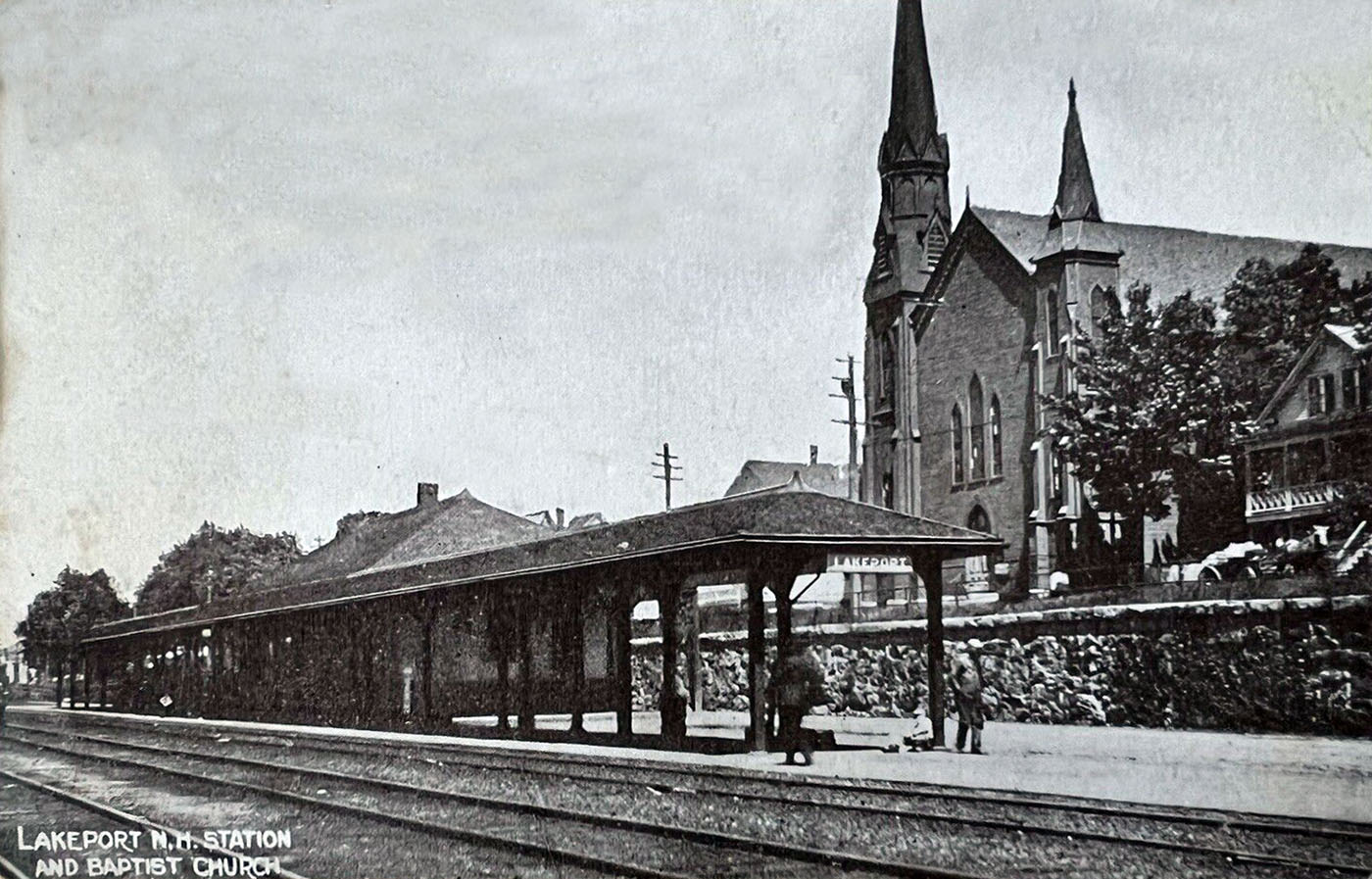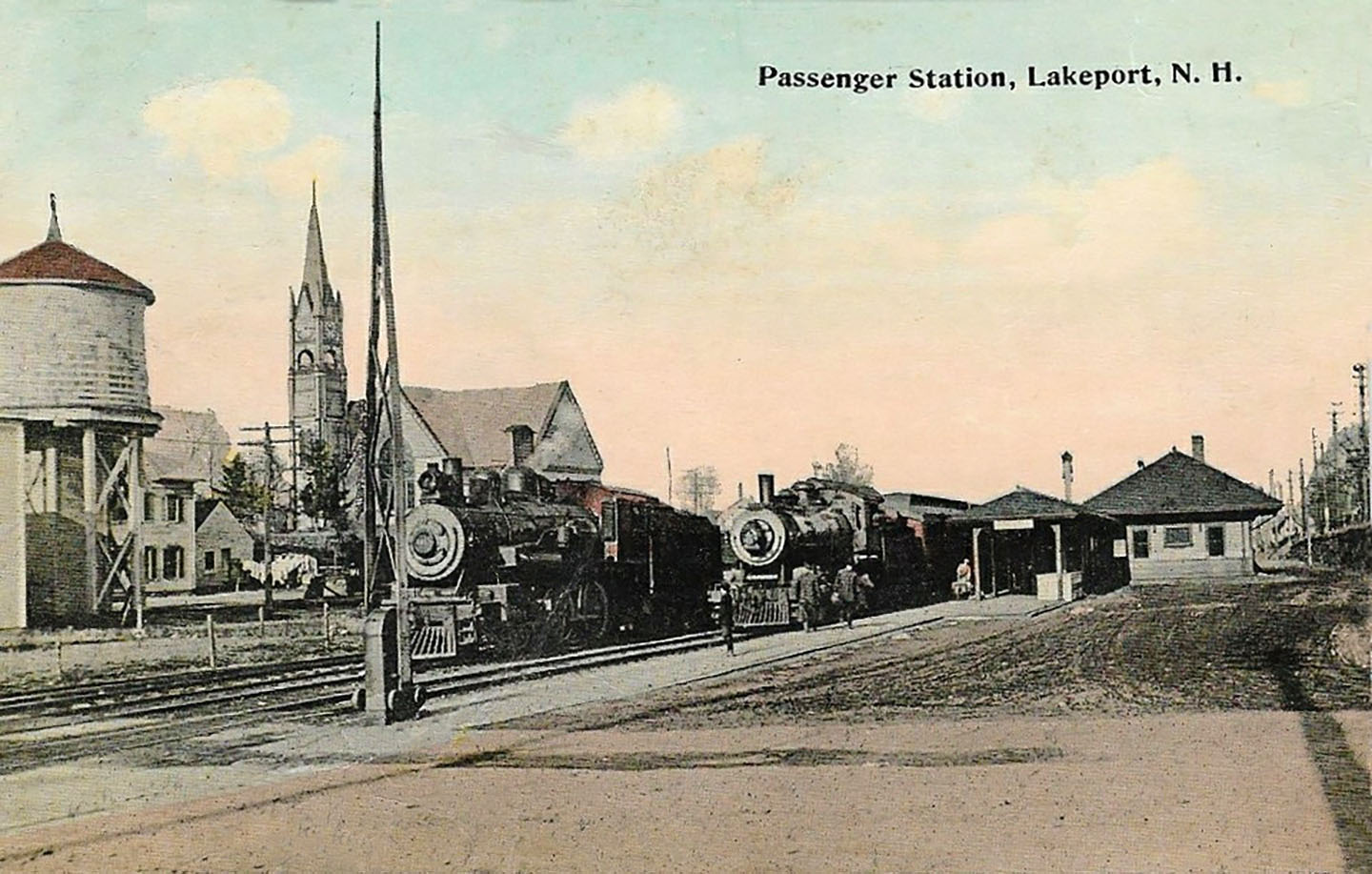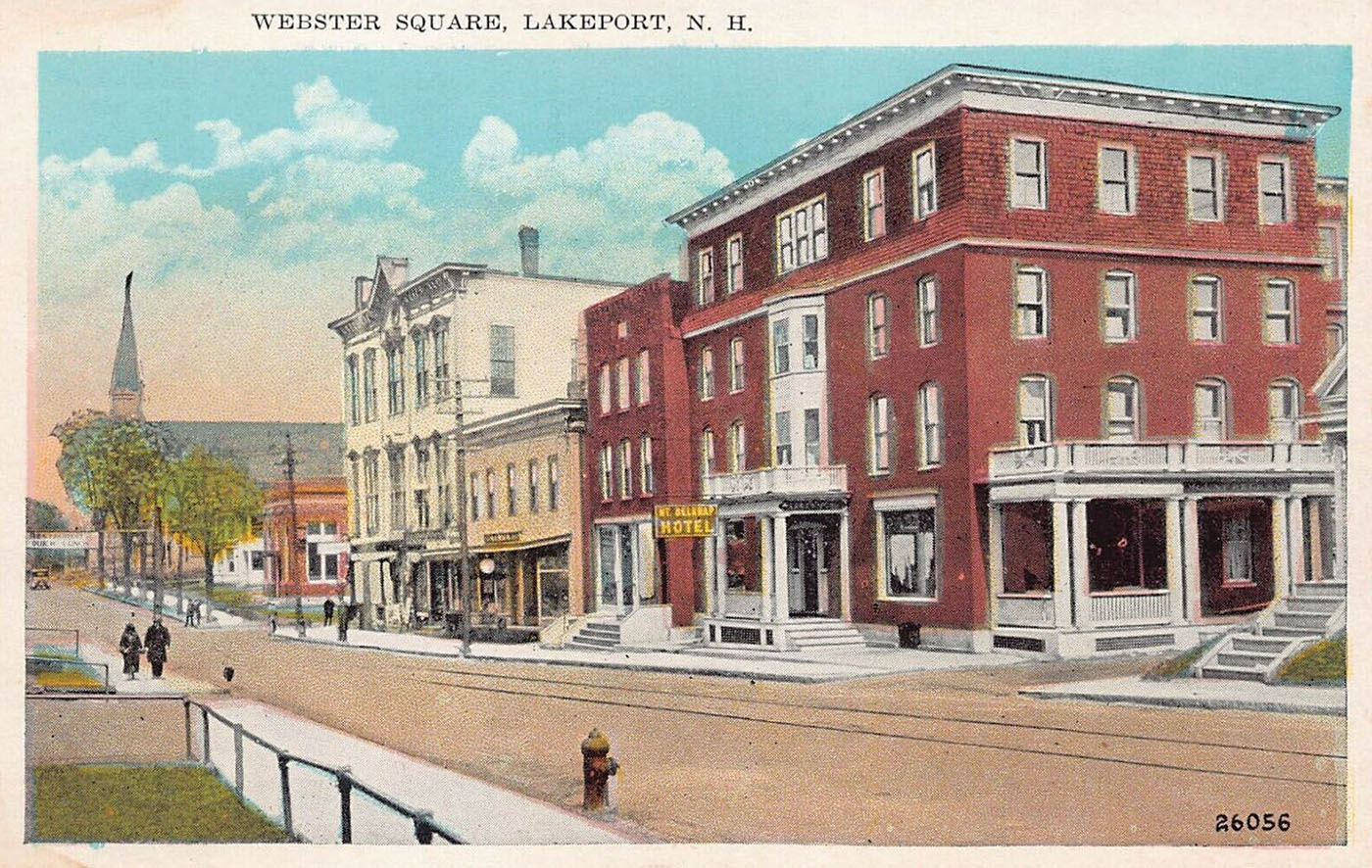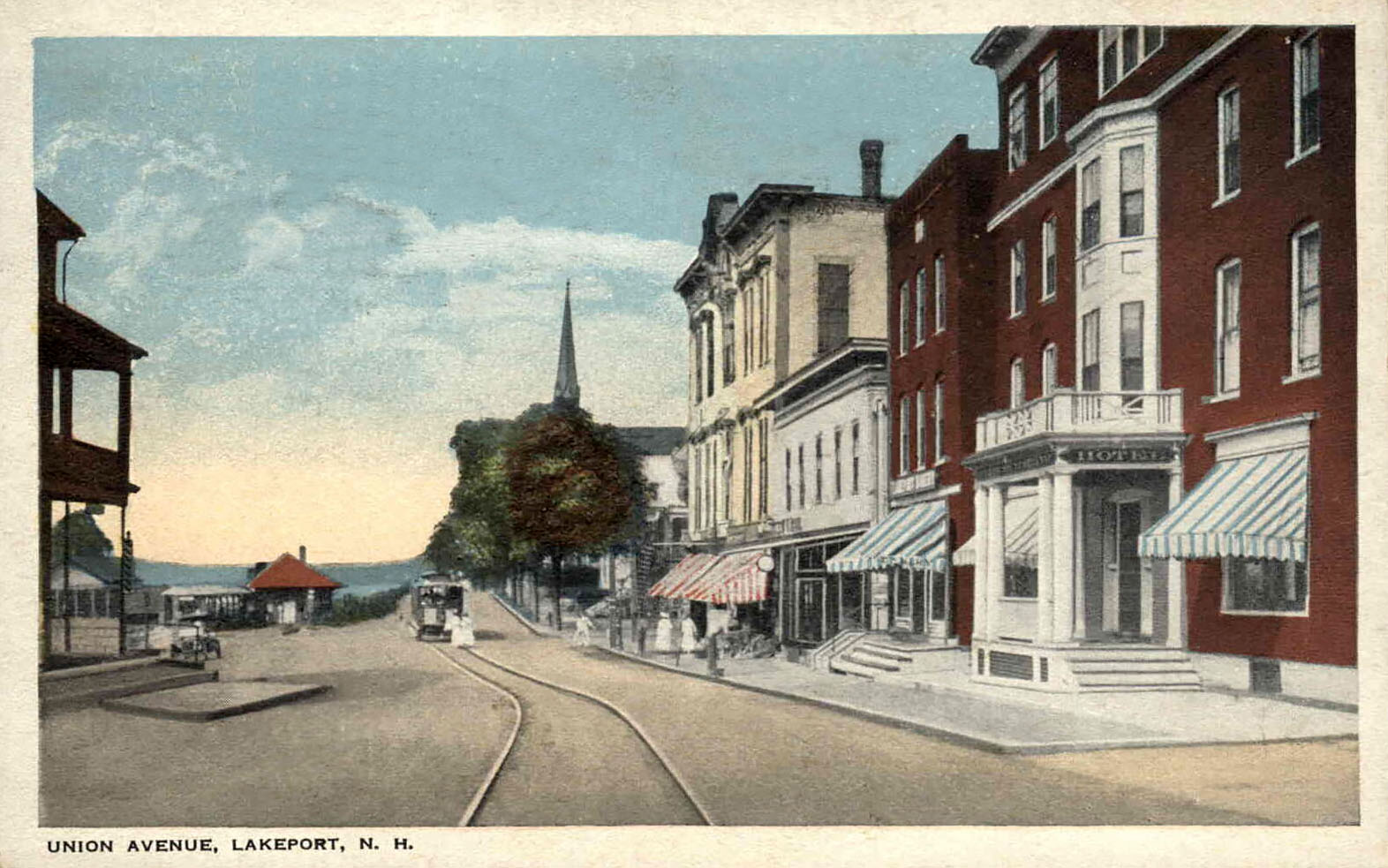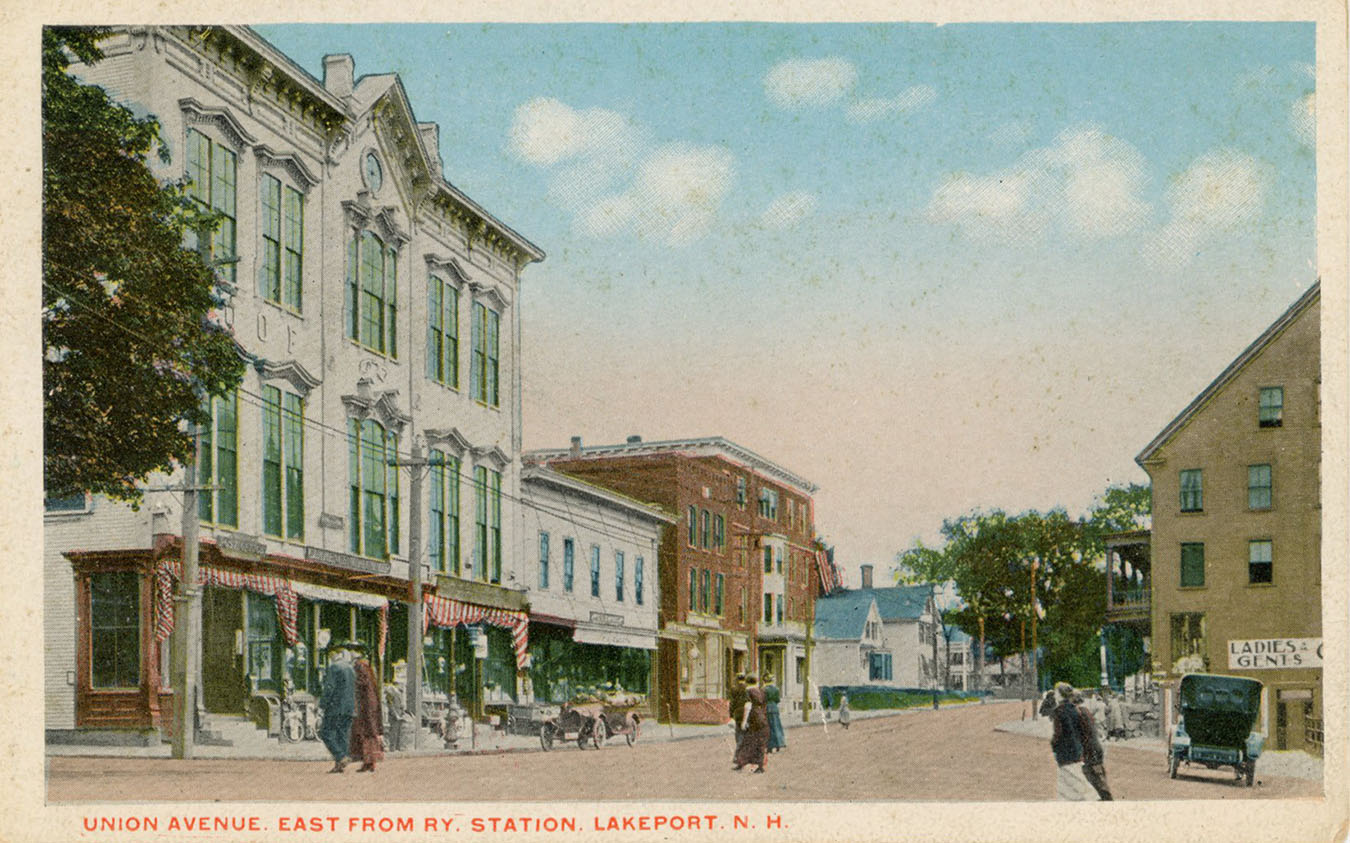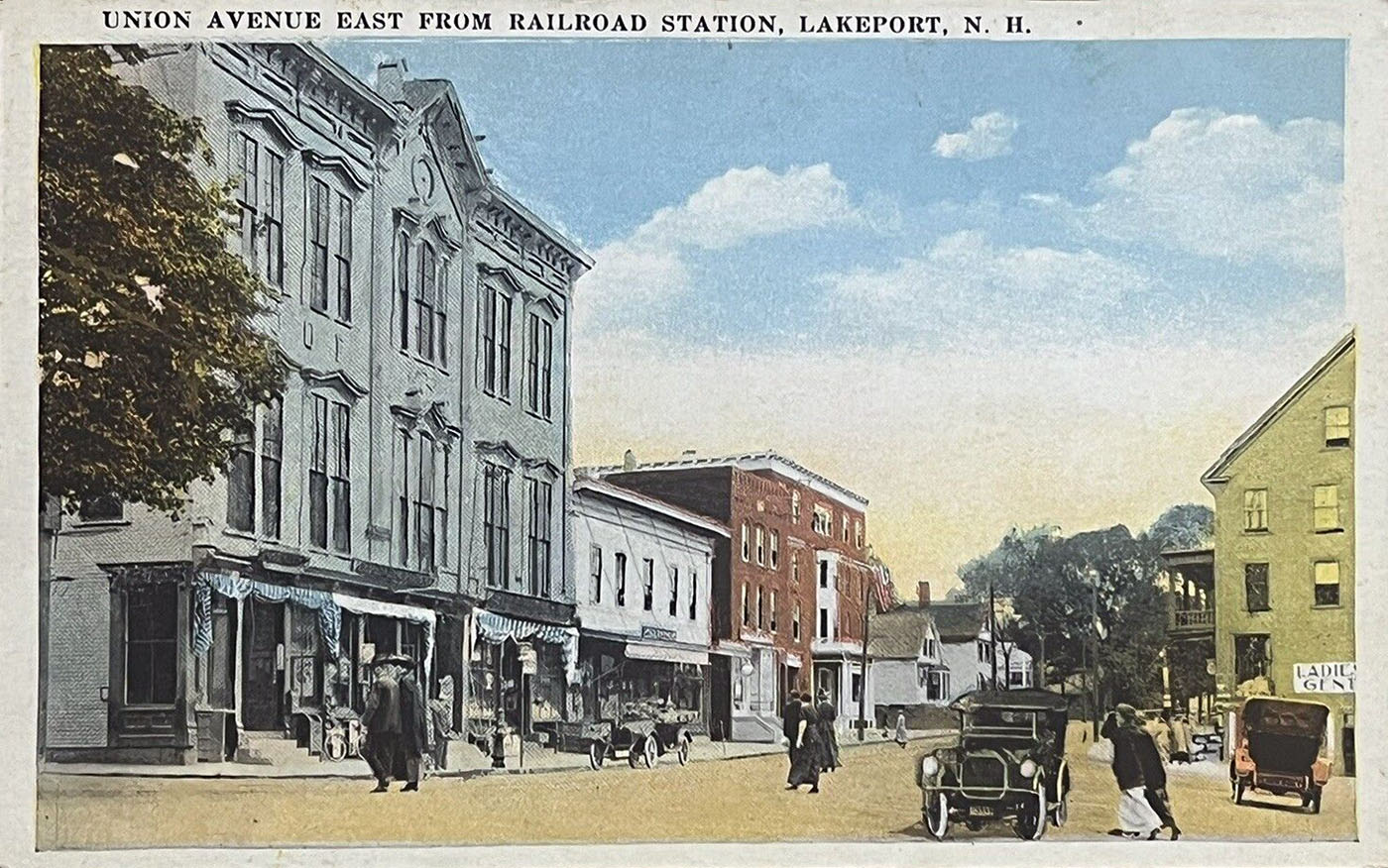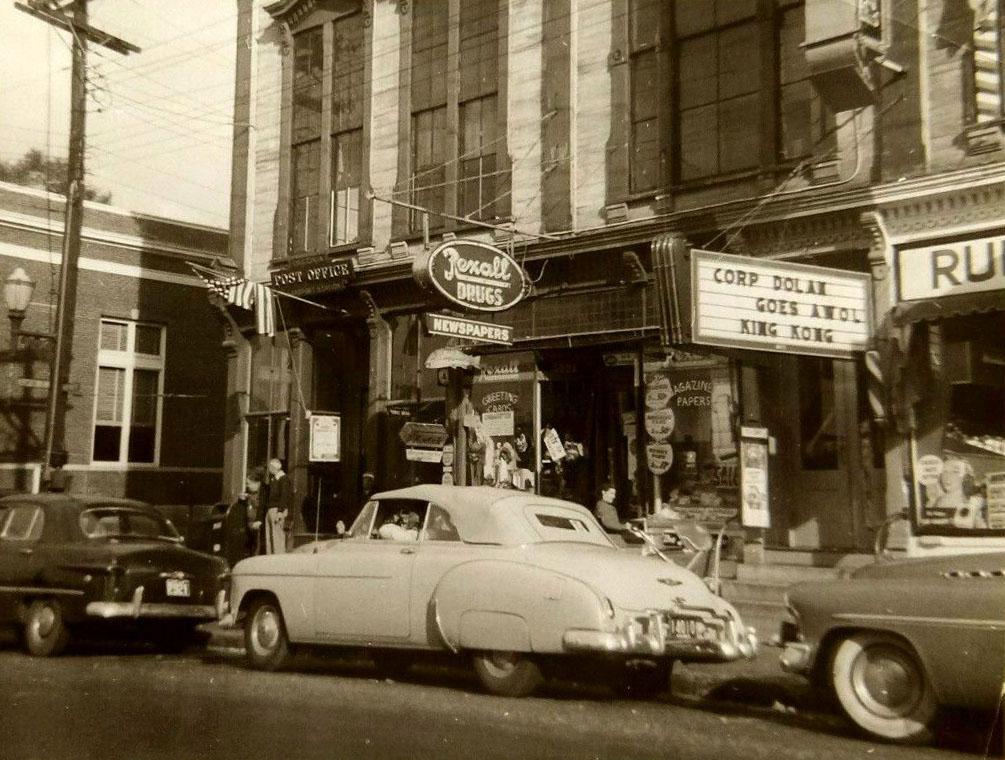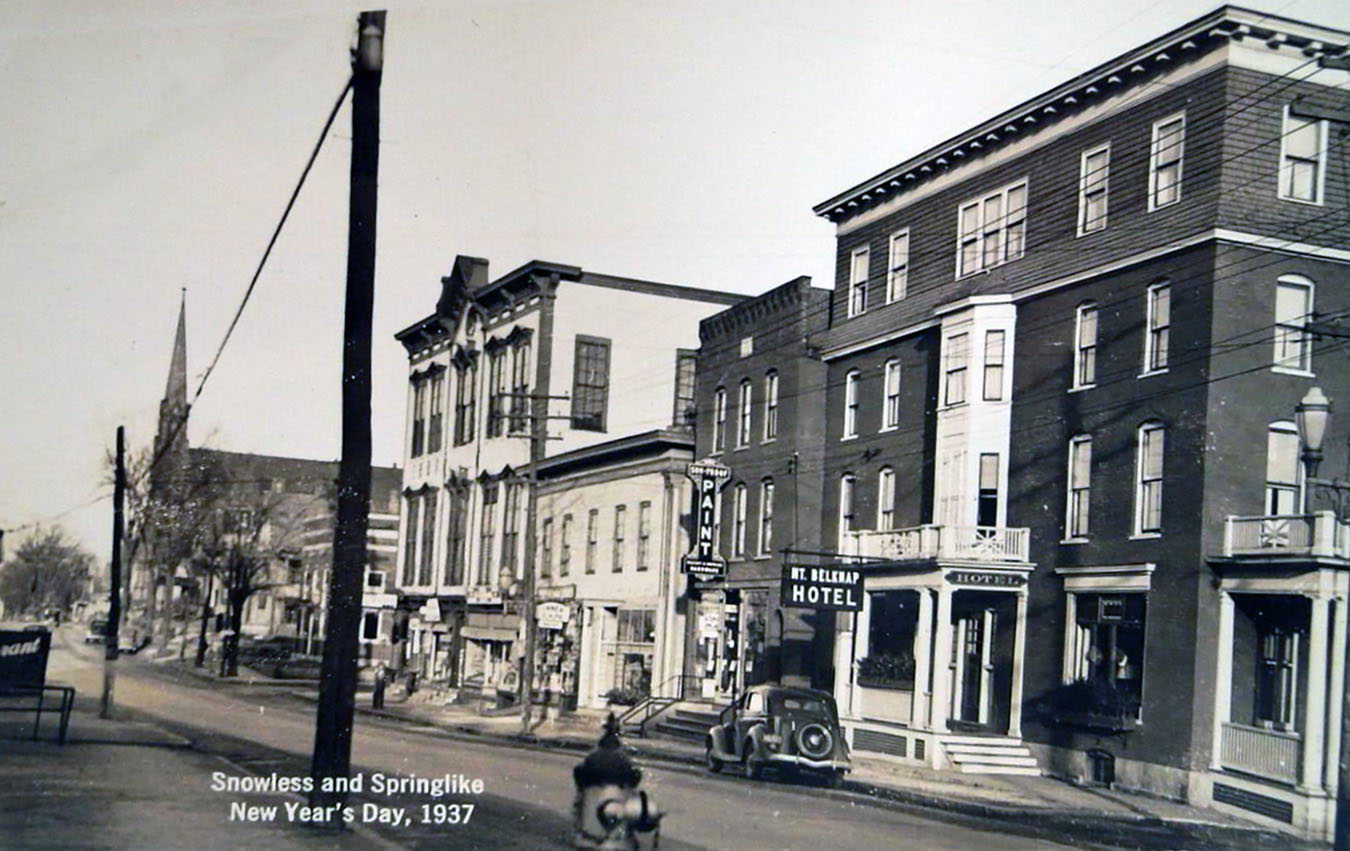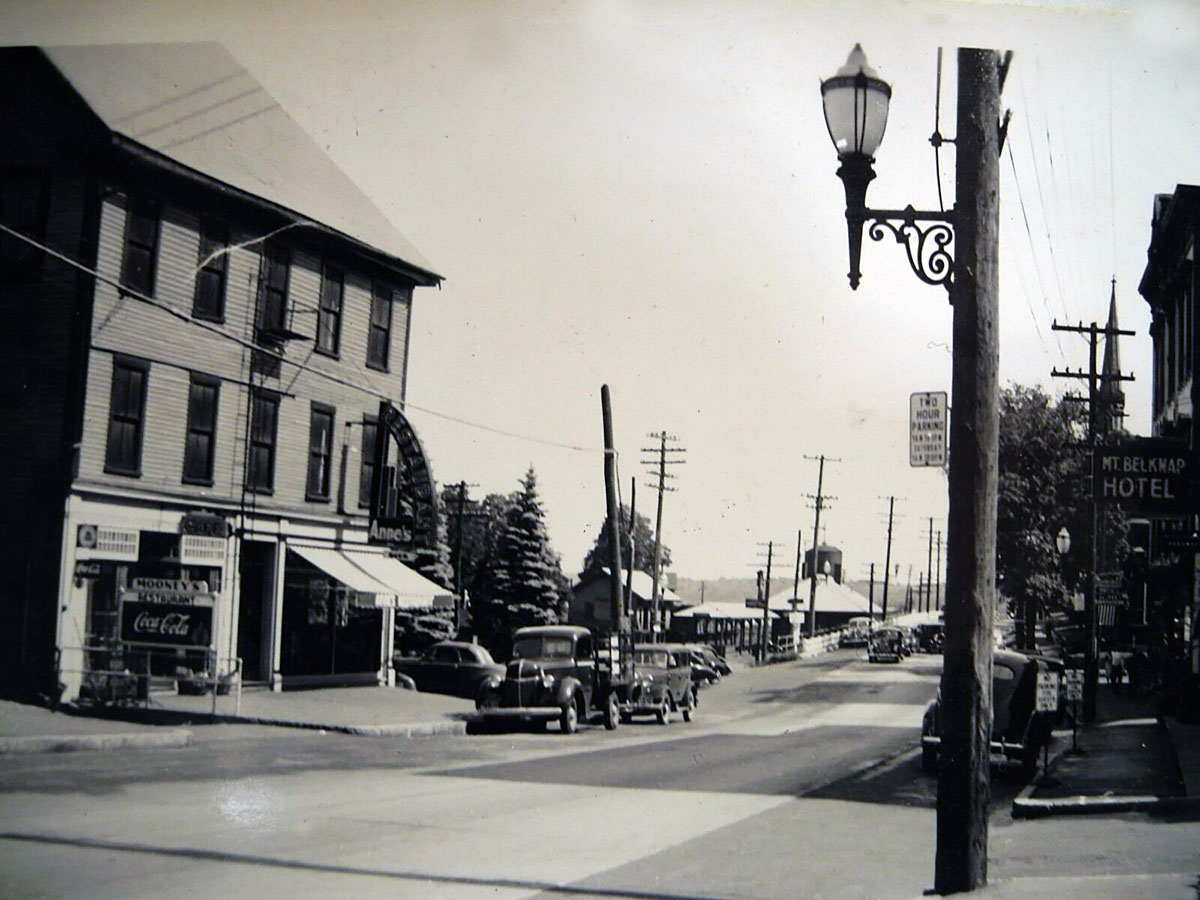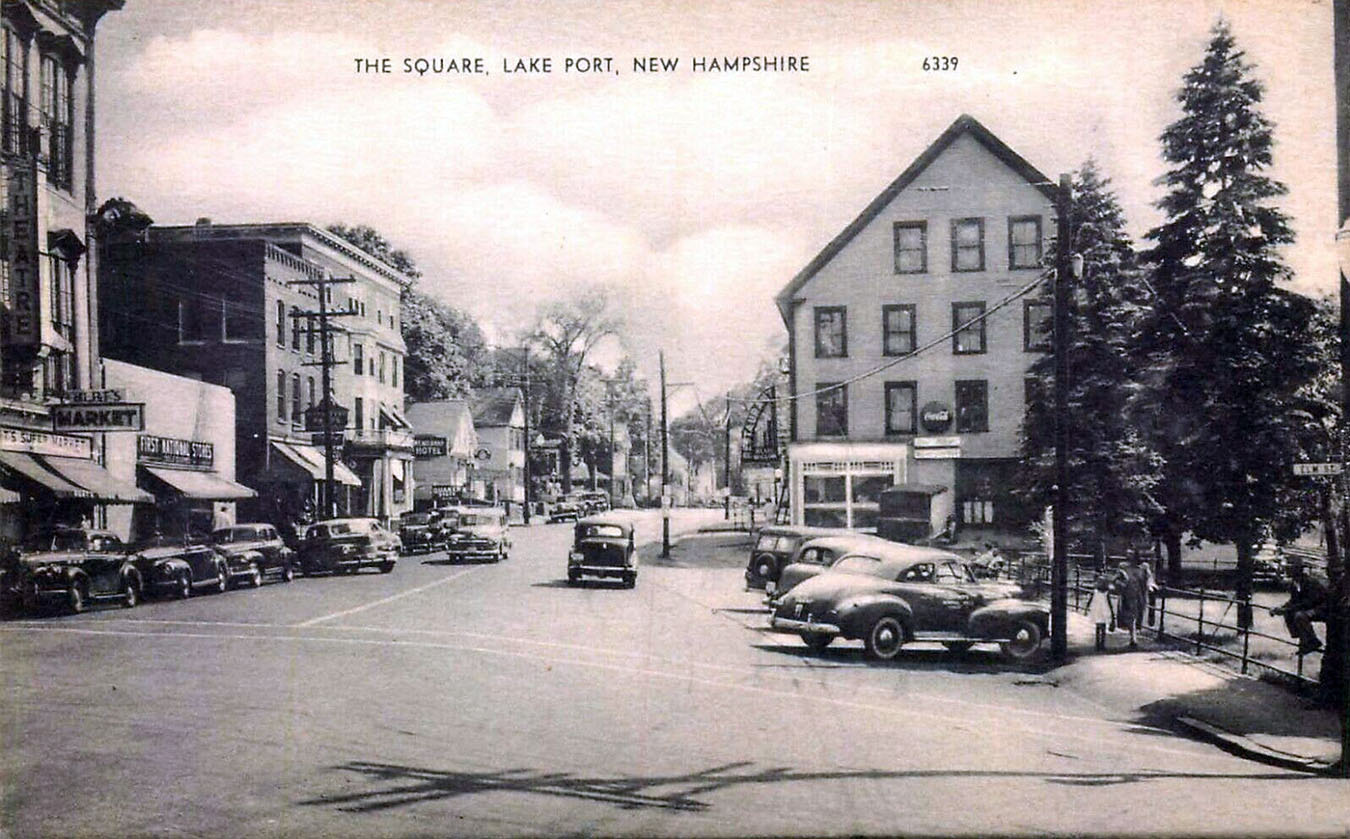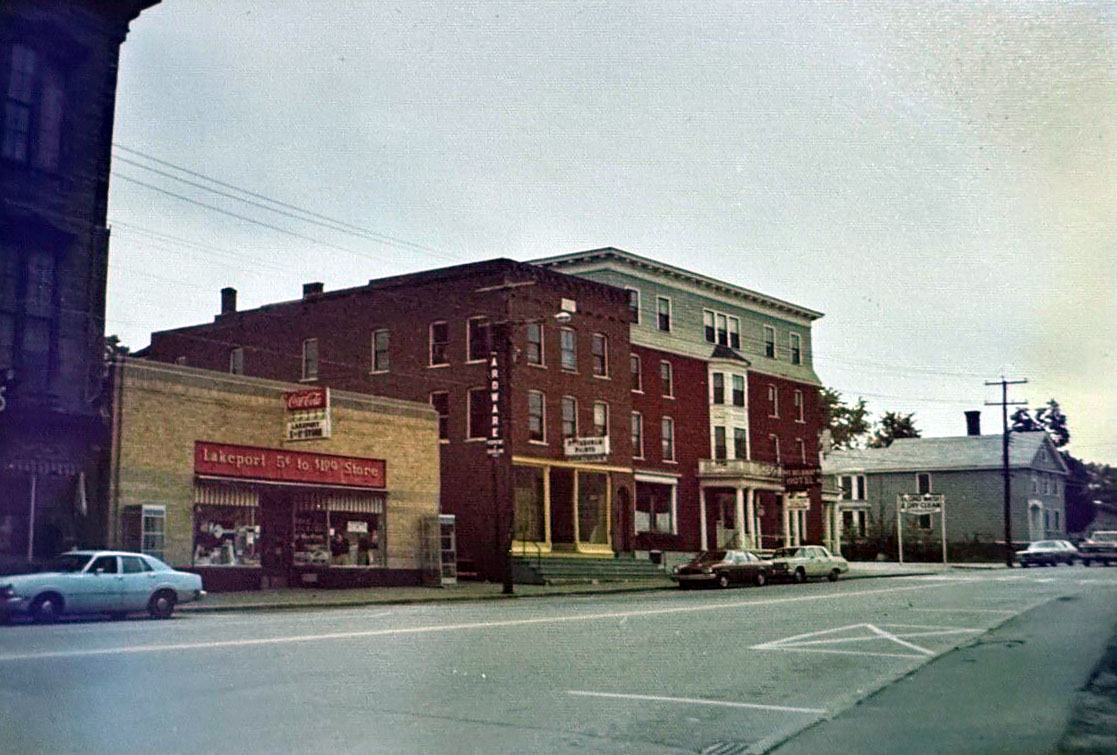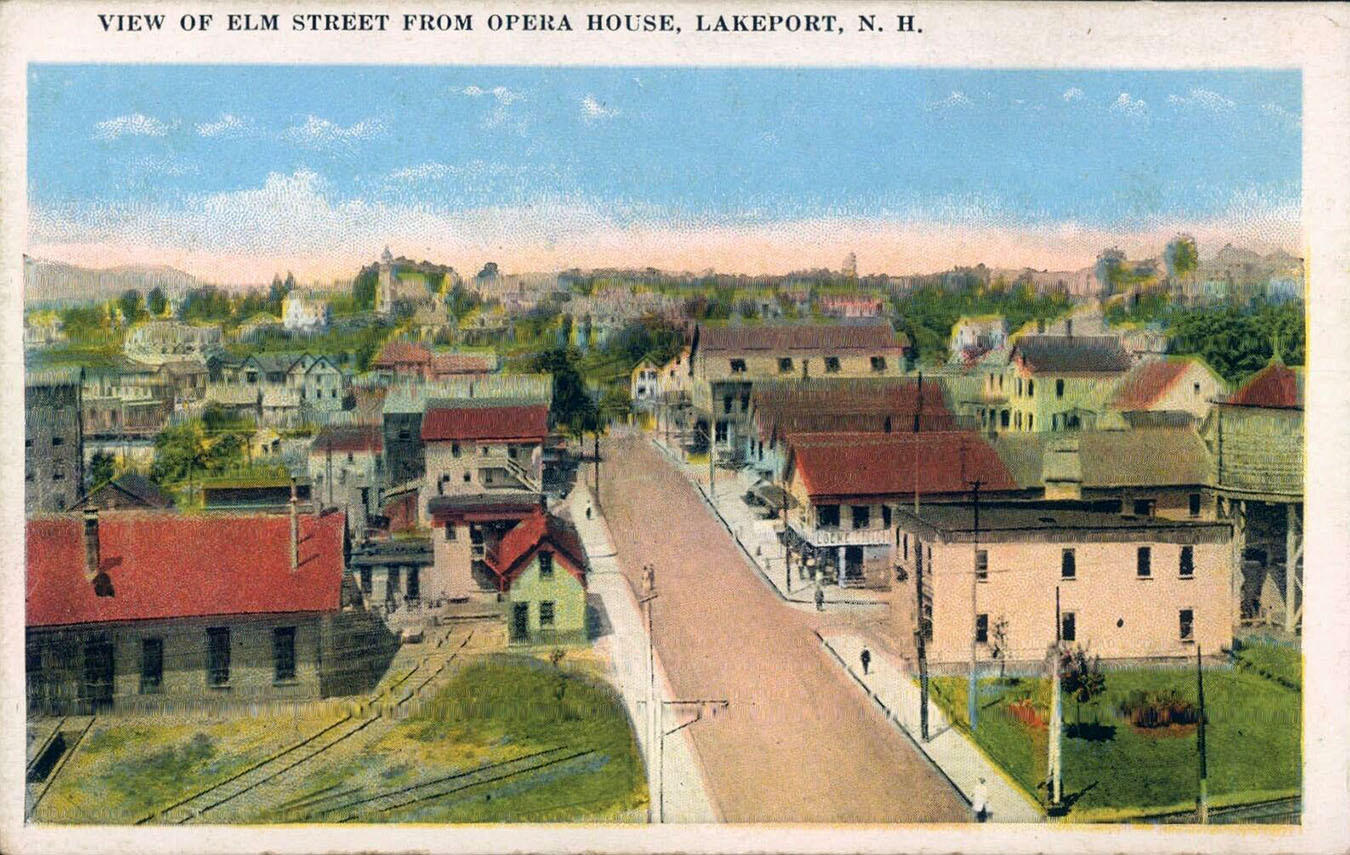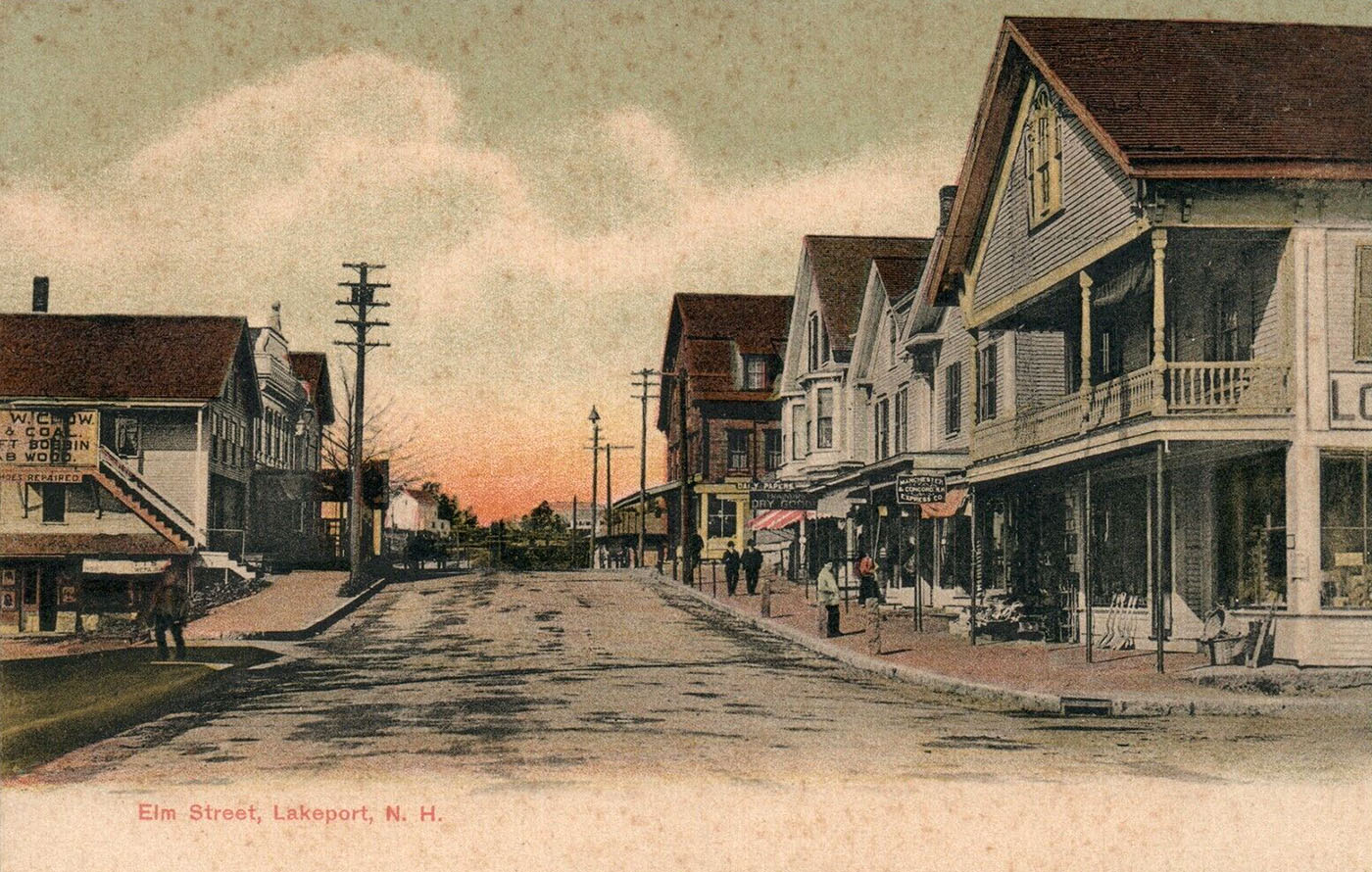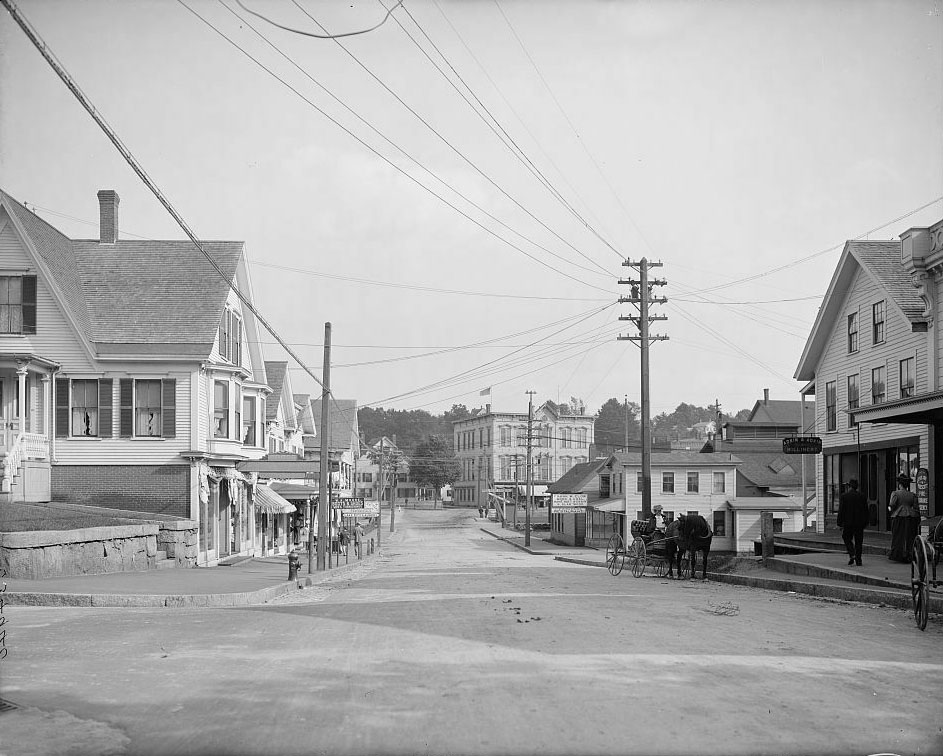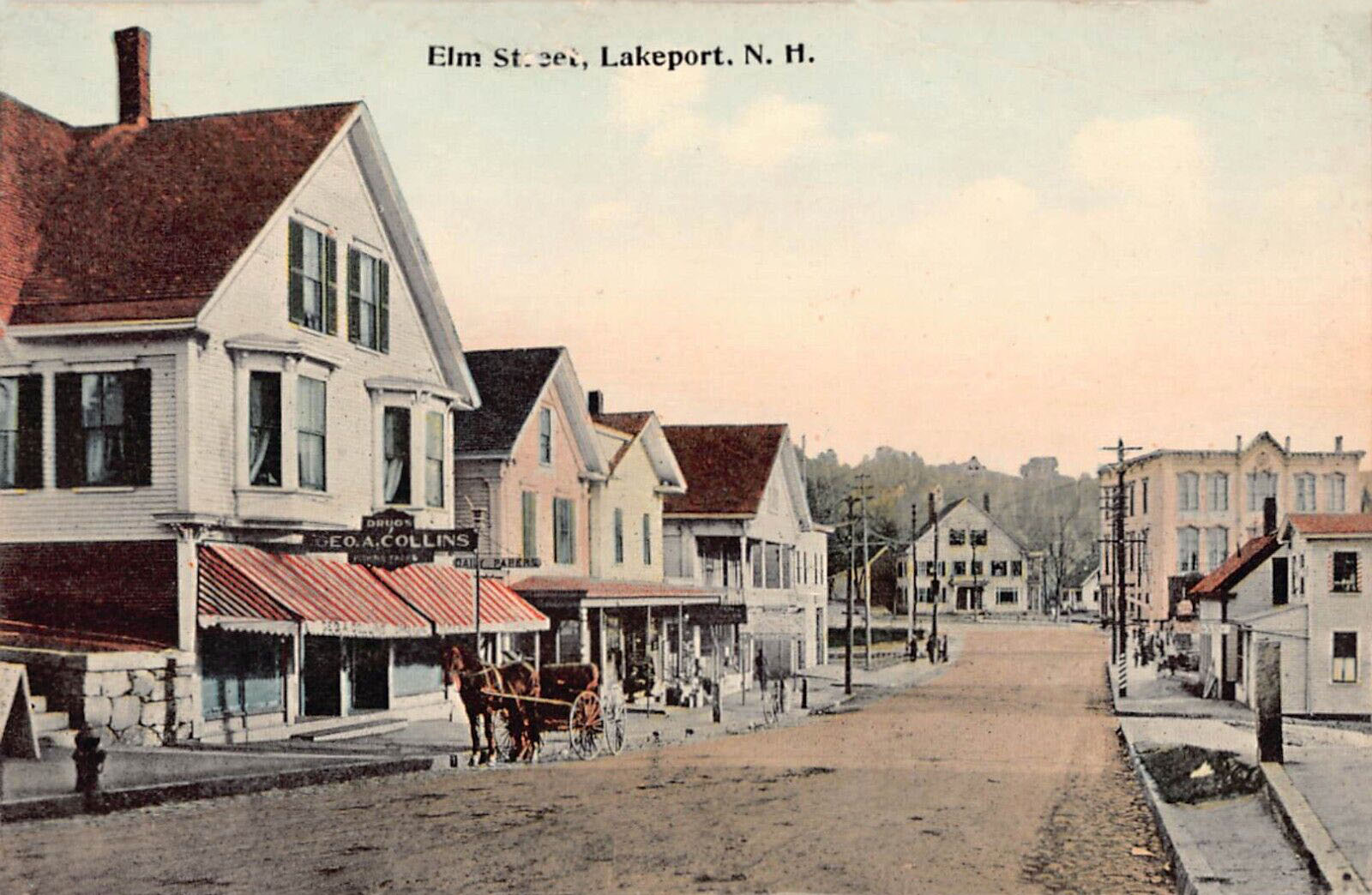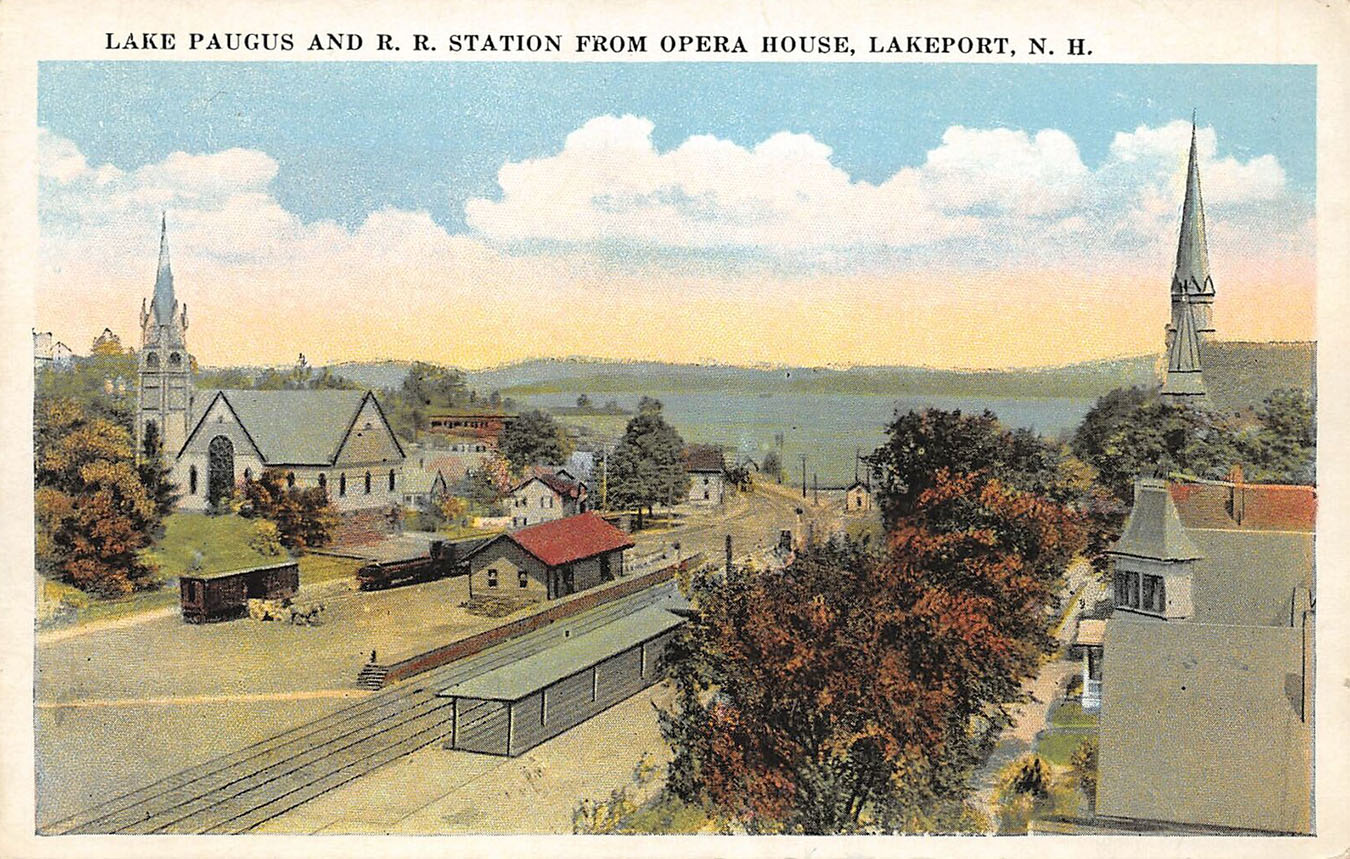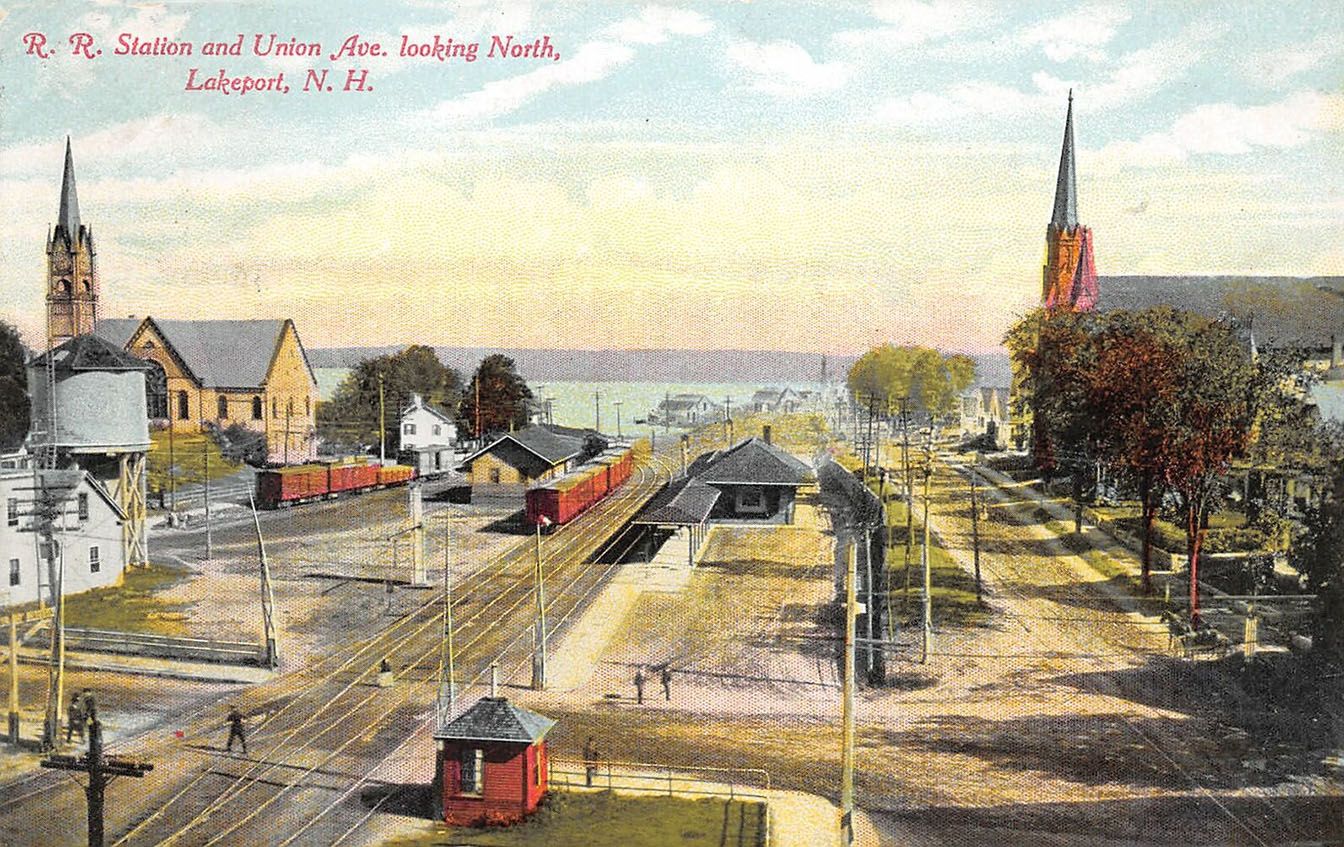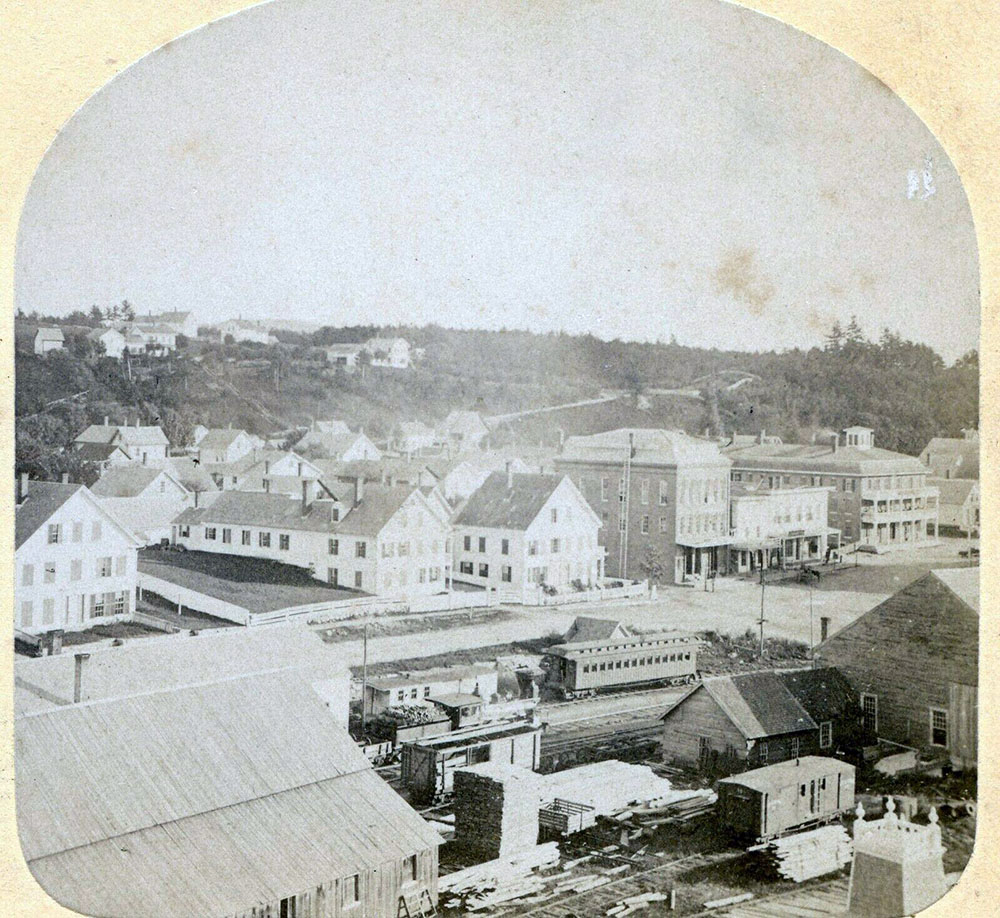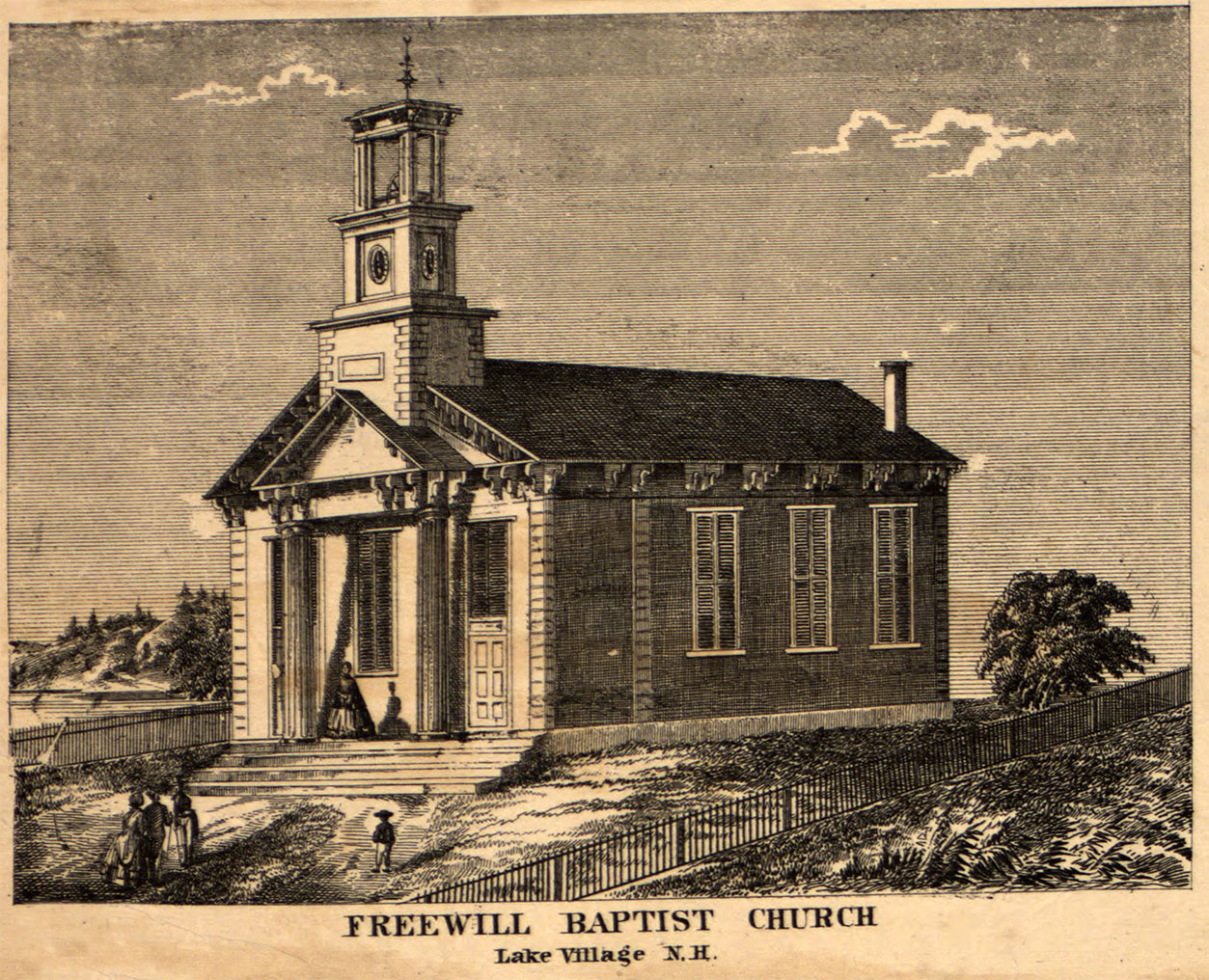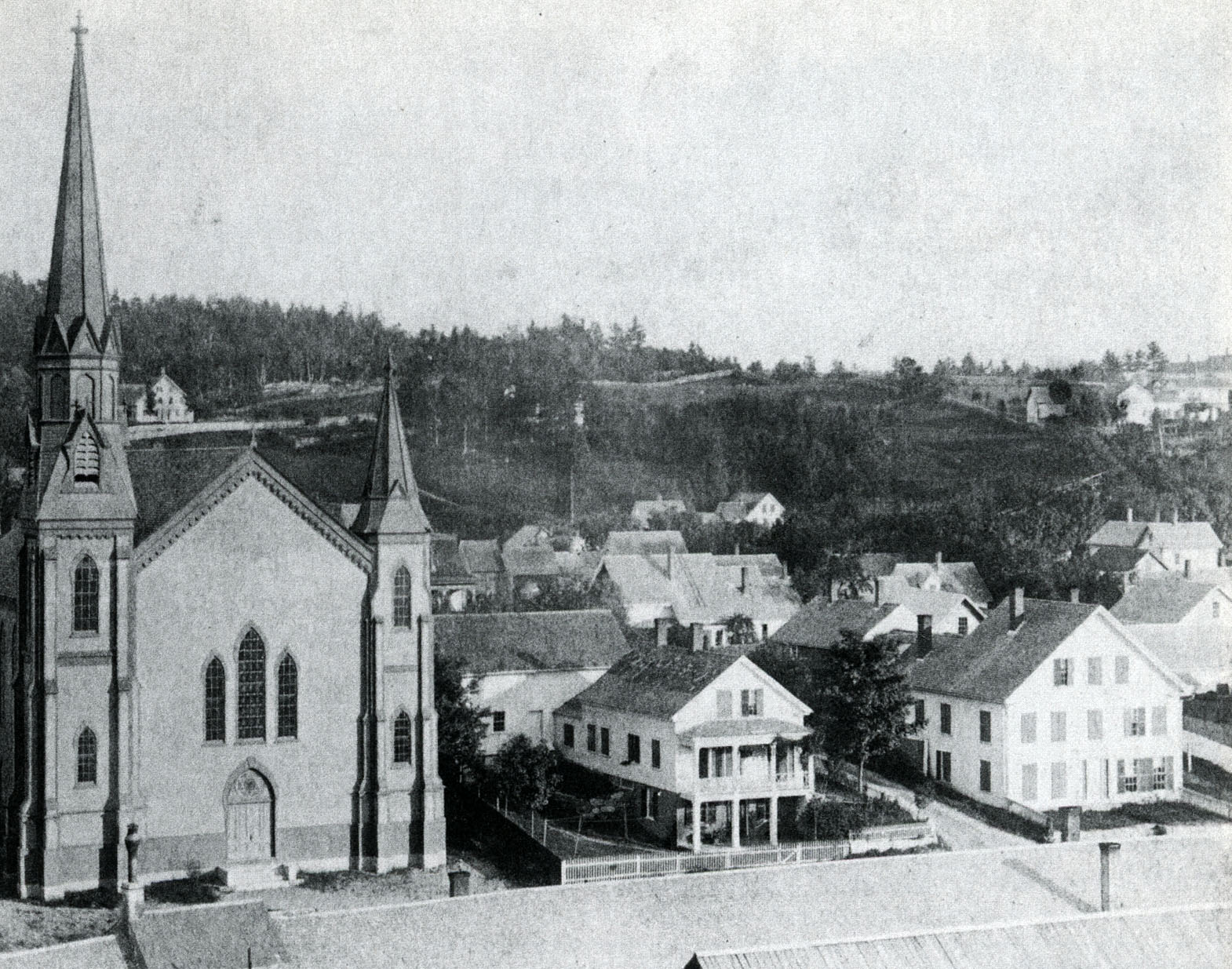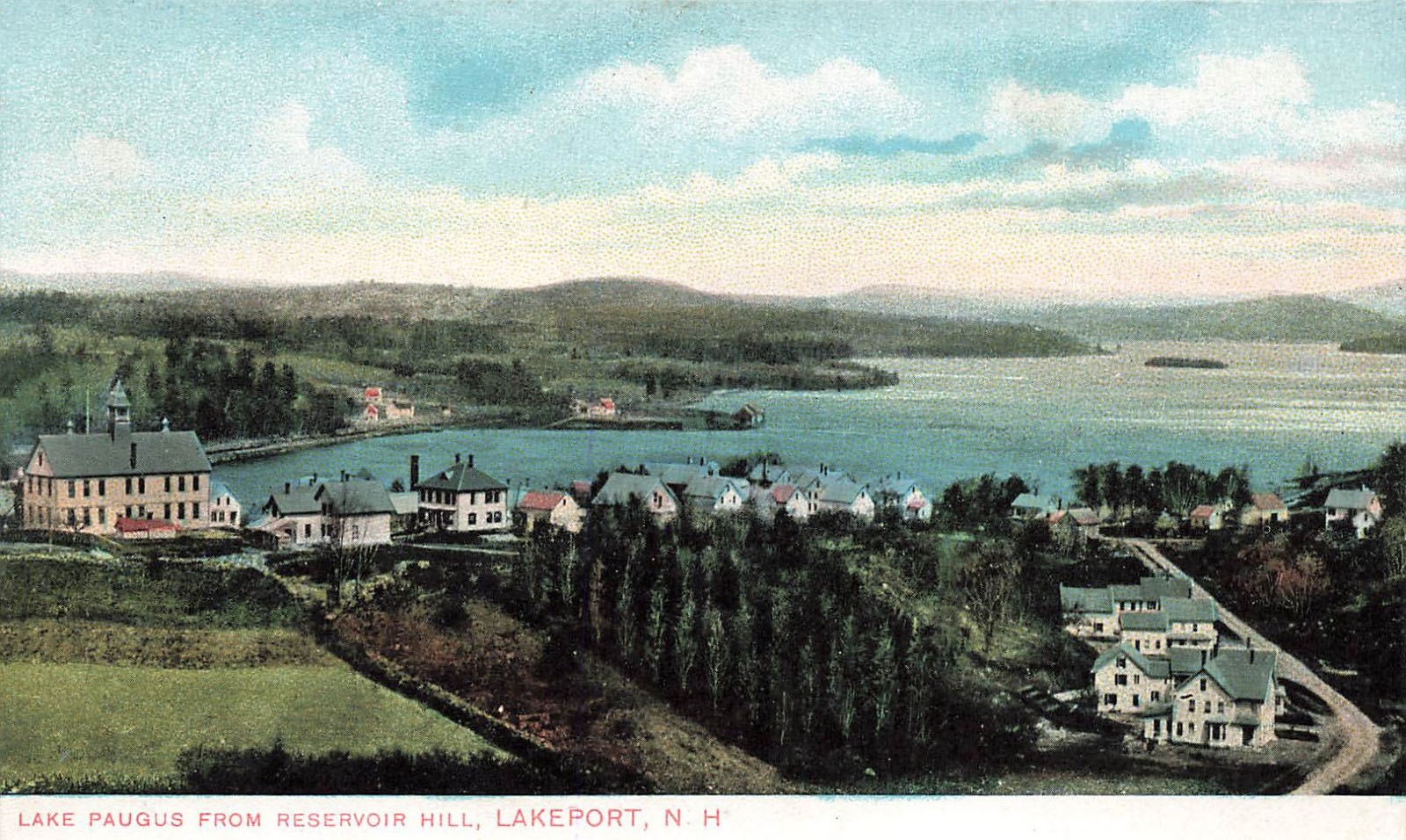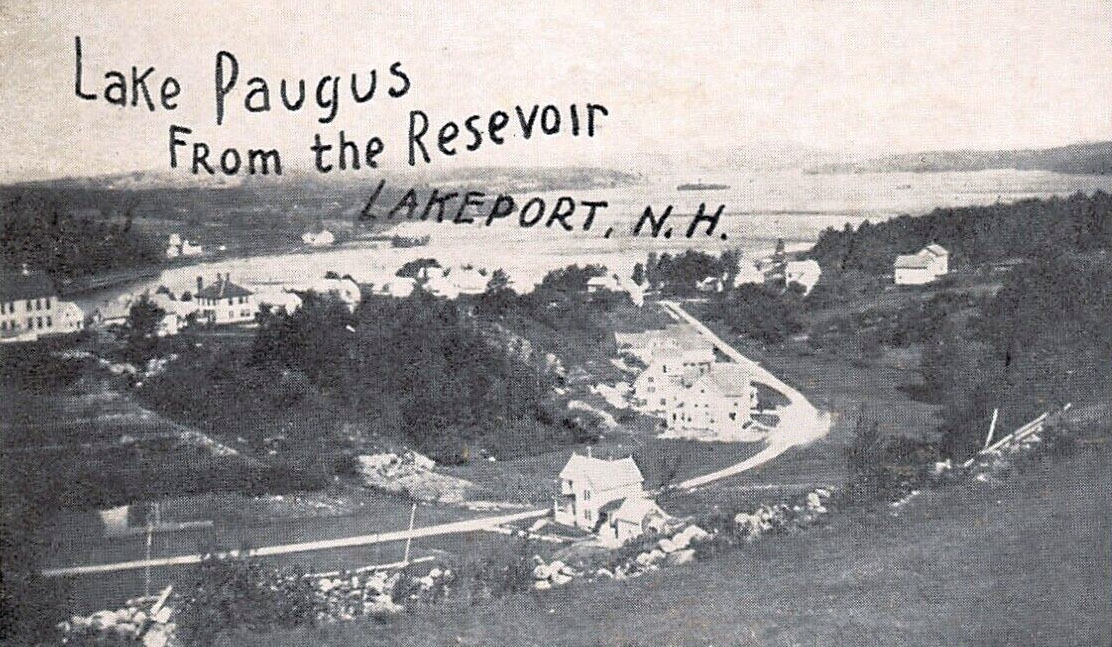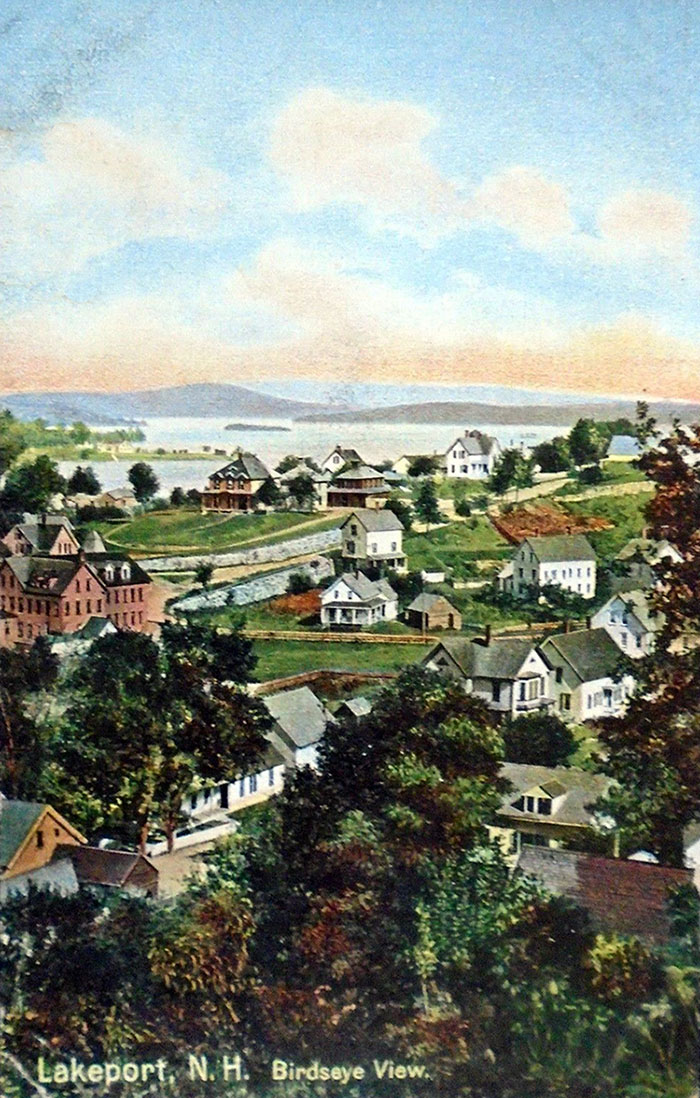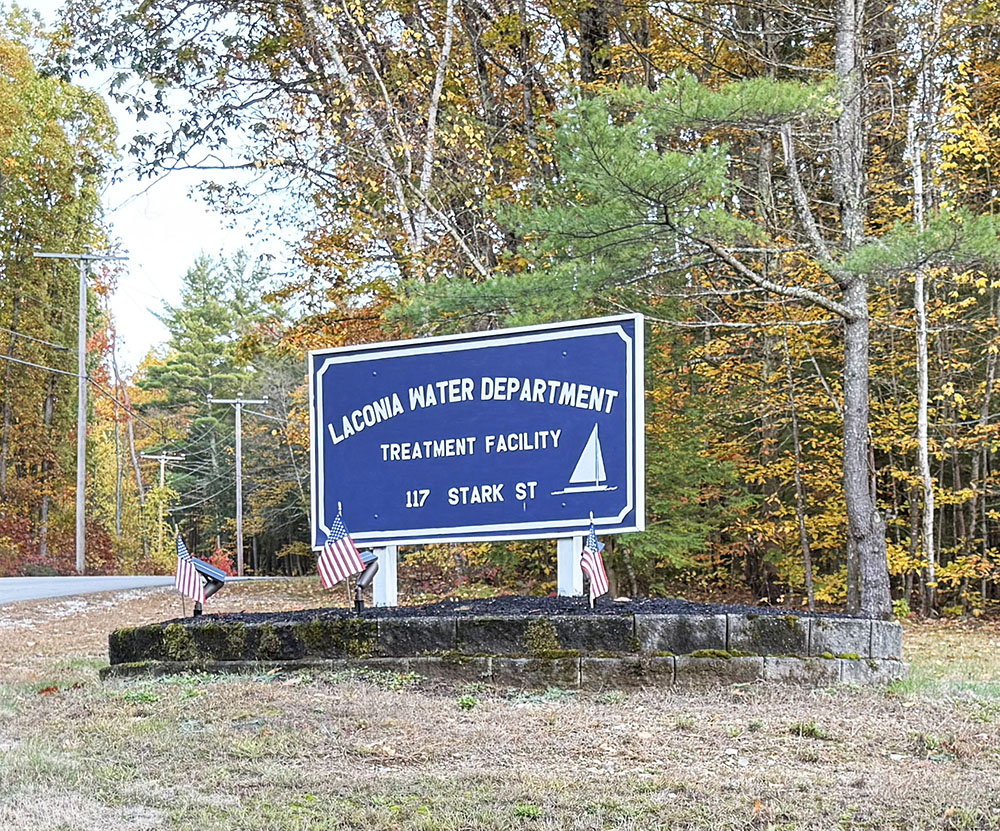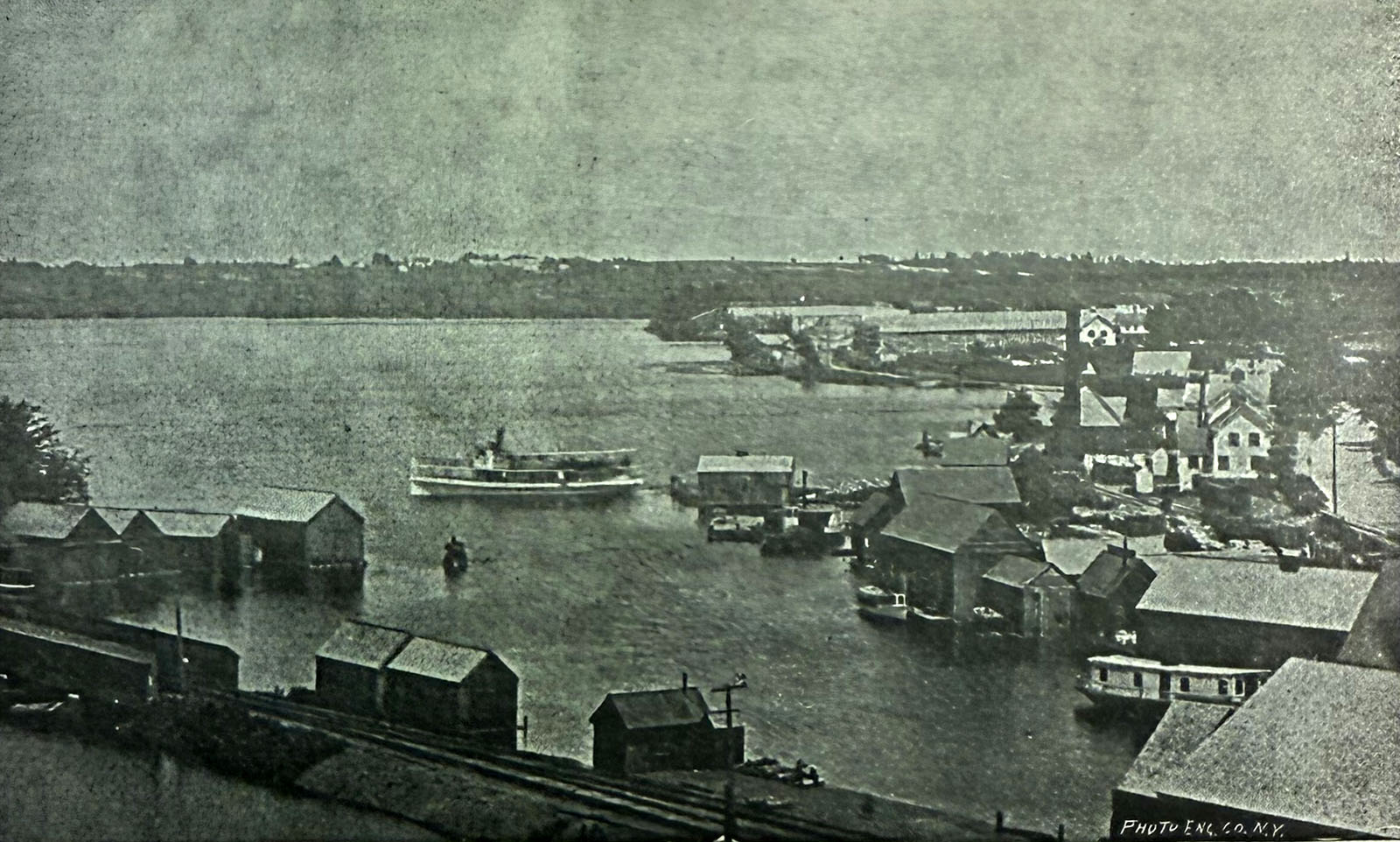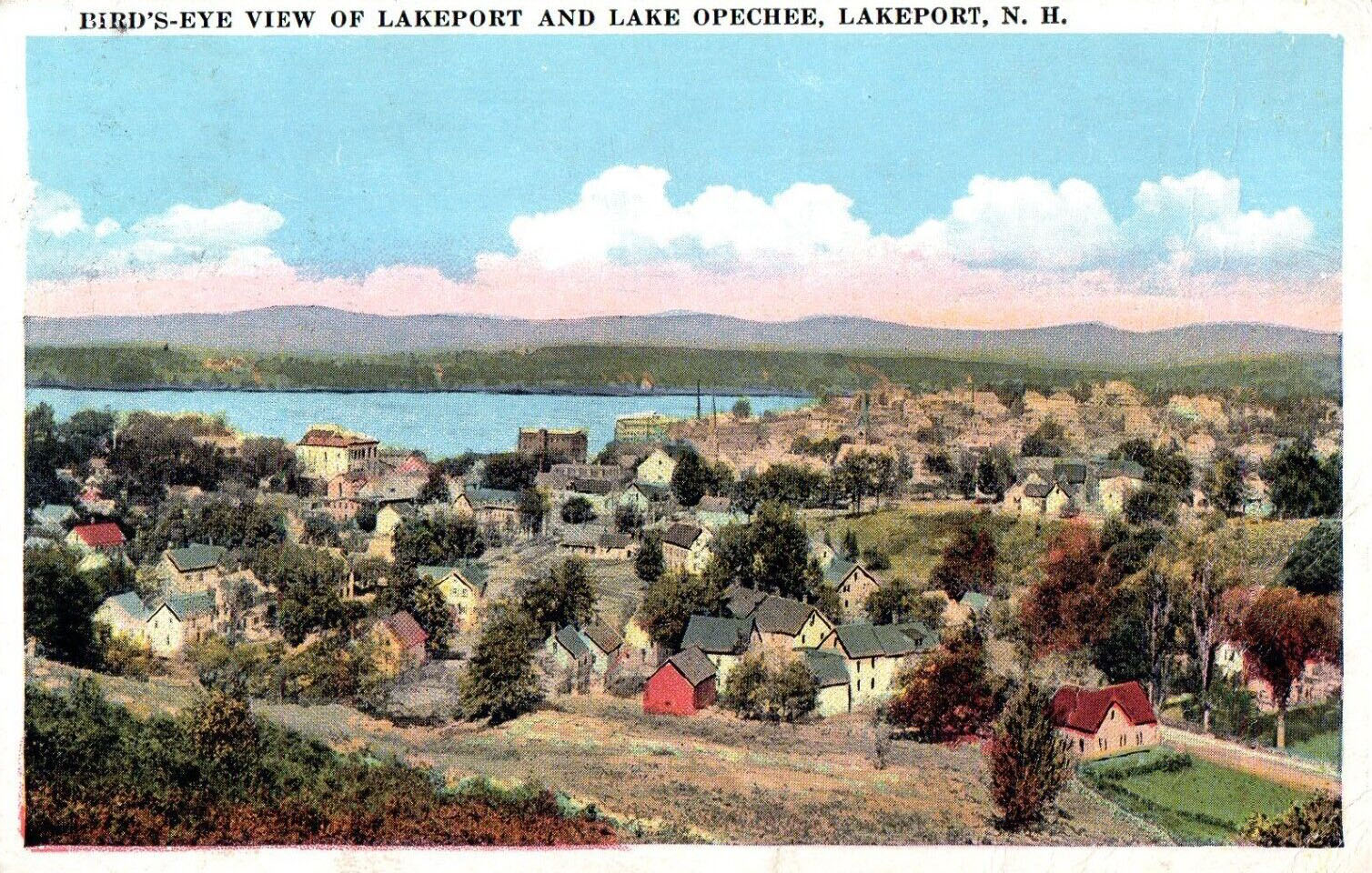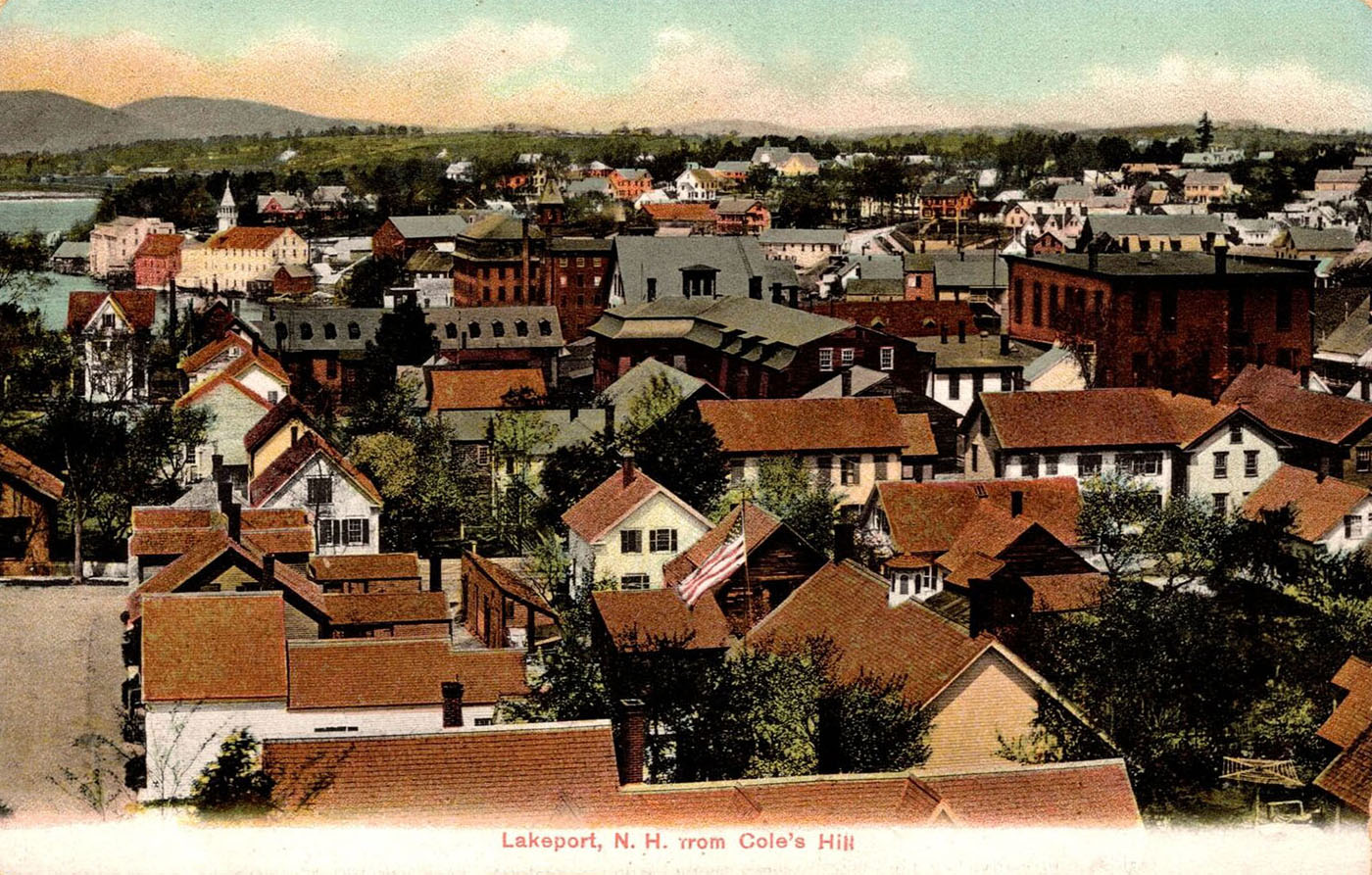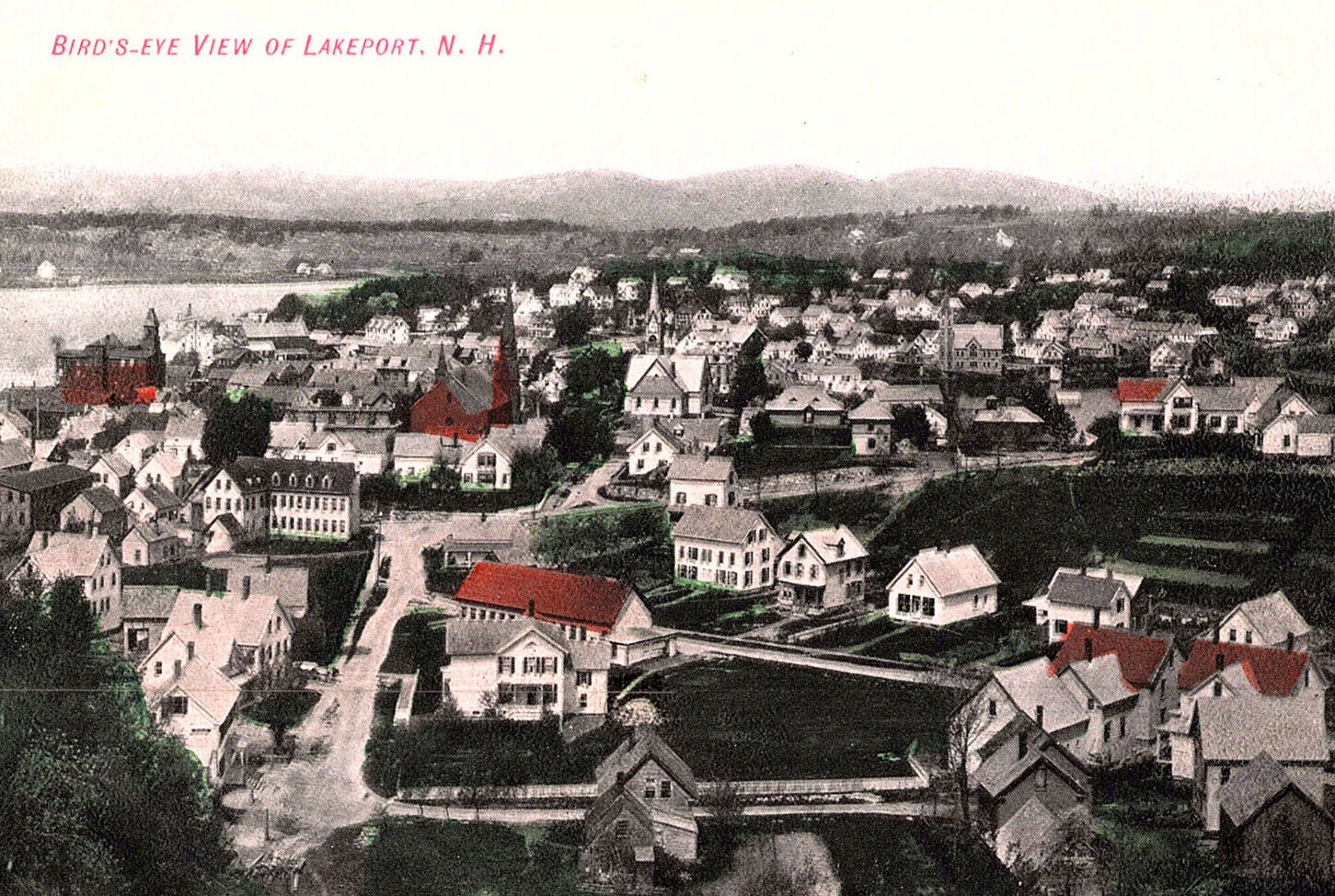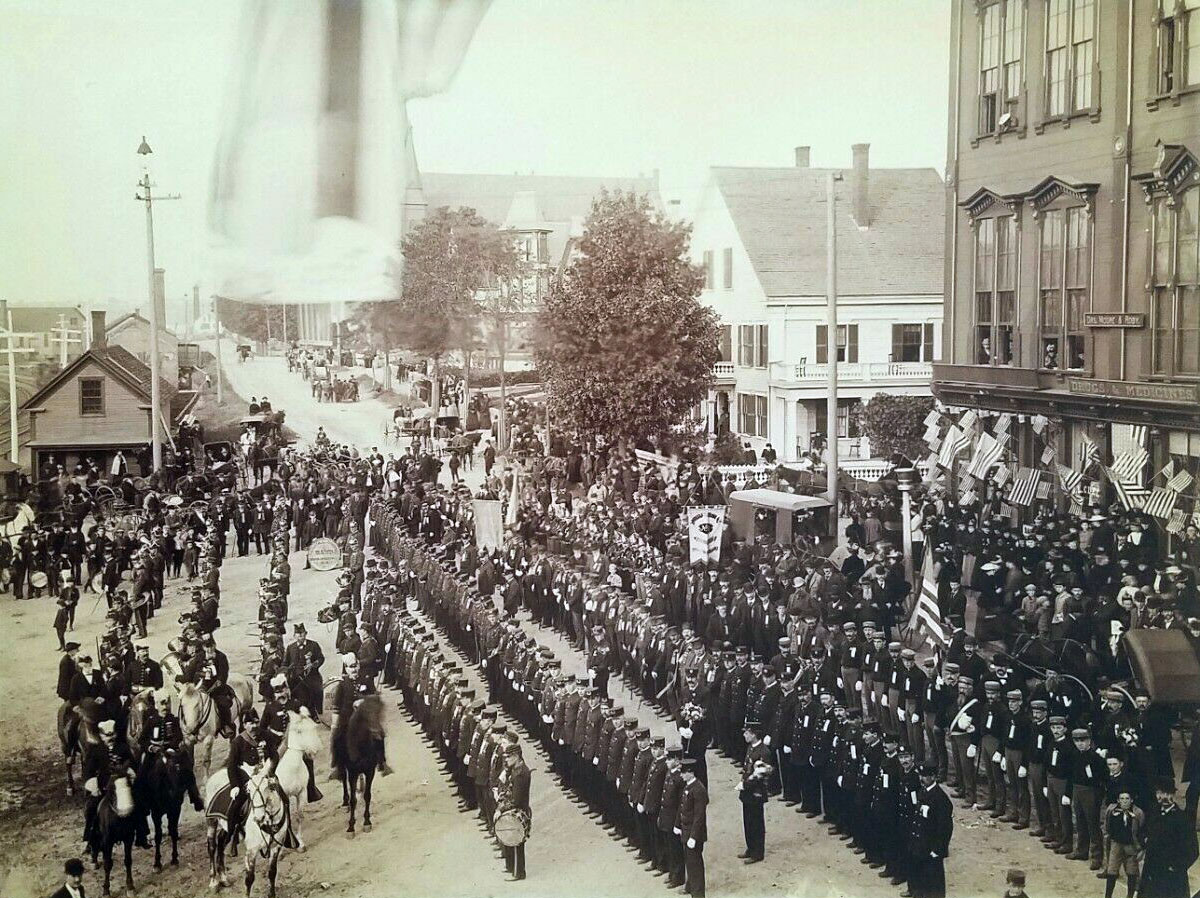Lakeport Opera House
Above, the Lakeport Opera House on a beautiful spring day, May 10, 2022. Click the button above the photo to go to the website of the restored Lakeport Opera House.
Below, historical stereoviews of the Lakeport Opera House. The building, at 781 Union Avenue, was originally Moore’s Opera House, and opened with its first performance on February 3, 1882. The theater, on the second floor, once seated 350 people. The theater has been completely restored, and reopened in June, 2021. The Laconia Daily Sun reported on July 30, 2019, that it would relocate its operations to the first floor of the building. In 2020, the building was completely renovated, and in addition to the Sun, it now features a coffeehouse on the first floor. Condos are to be built on the 3rd floor.
To the immediate right of the Opera House, Chester D. Andrews photography studio occupied the 2nd floor of the Osgood Block. The Osgood block burnt down in January, 1939, and was replaced in 1940 by a one-story building. That building was first occupied by First National Stores, then the Lakeport Five & Dime. Recently, it held the Chaos & Kindness store, which relocated to the Cake Theater in June, 2024.
Lakeport Square (1900s-1910s)
Lakeport Square was once known as Depot Square. Downtown Laconia also had its own Depot Square, so it was not long before the square in Lakeport was renamed to differentiate it from the one downtown. Cards from 1905-1909.
In downtown Laconia, the watering trough was removed from Bank Square in late summer of 1924. A Laconia newspaper editorial, commenting about the removal, stated that “…although there are many that have adopted the automobile, there are also those who still have their horses, and use them.” The editorial recommended that another watering trough be placed in an alternate location, so that the horses of rural residents who “…bring their products to Laconia and buy their needs in our local stores… could be relieved from suffering from thirst.”
Detail of Lakeport Square from an 1883 map of Lake Village (Lakeport). The Lakeport Opera House, marked with a “J” on the roof, is clearly drawn in. At that time, it was called Moore’s Opera House, and it was labeled as such on the map key.
An 1874 ad for the Mt. Belknap House. Proprietor David B. Story, listed in the ad, would later build one of Weirs Beach’s principal hotels, Story’s Tavern. Story had purchased the Mount Belknap House on December 28, 1872, and had sold it in April, 1876. The hotel changed ownership many times over the years.
The Mount Belknap Hotel
After a major fire on December 17, 1911, the Mount Belknap Hotel was reconstructed in the same location. The mansard roof, cupola, and the 2nd and 3rd floor balconies of the old House were lost or removed, while a wooden fourth floor was added to the orginal, three-story brick structure. The six-columned, ground floor entrance, which had originally spanned the entire front of the building, was reduced to a central, two x two column portico. The rebuilt hotel featured 40 rooms.
The building to the immediate left of the hotel was known as the Cushing Block and housed at first a bakery, then a paint store, then a hardware store. Apartments were rented on the top two floors. Below are various postcards of the rebuilt hotel.
The Lakeport Railroad Station
The Lakeport railroad stations, the last stop before reaching Weirs Beach. Passenger station to the right, freight station to the left. The freight station, opened in 1900, remains standing. The passenger depot, opened on February 7, 1900, remained in railroad service until 1953. The passenger depot was removed in July, 1986 to other City of Laconia property. In 1992, the City sold the depot to Rick Miller and Don Leavitt of the Red Hill Inn. The new owners moved the depot again, this time to land near the Laconia Airport, with plans to incorporate the building into Kimball’s Castle. The plans did not come to fruition, and the depot burned in 2001. The Union Avenue Baptist Church, seen on the right side of the postcards, was removed in 1940.
Lakeport Square (1920s-1940s)
A view looking north on Union Avenue towards Lakeport Square, circa 1922.
Two, nearly-identical views of the Opera House in the 1920s, looking south from the center of the square. The second, partially colorized postcard shows a car that is not present in the first postcard.
“The Square, Lake Port”, late 1940s. On the extreme left of the photo is a vertical “Theatre” sign. The neon sign was installed in January 1947. The title of the postcard, simply “The Square”, shows that Lakeport Square was no longer called “Depot” or “Webster” square by this point.
This view of Lakeport Square in the early 1970s shows the Mount Belknap Hotel just prior to its destruction, when it had been closed for a few years. Both the Hotel and the Cushing block were torn down in November, 1975, to make way for the Lake Village Apartments, which after a long period of construction, opened for occupancy in 1983.
Elm Street
The Baptist Churches
Another view from the top of the Opera House shows Lake Paugus and the Railroad Station, as well as the two nearby churches.
In the previous postcard view, the NEW, Park Street United Baptist Church can be seen on the left of the postcard, and the Union Avenue Baptist Church on the right of the card. The Union Avenue church, with its soaring Gothic Revival towers, opened on August 23, 1871, and was demolished in October, 1940. Below, a similar postcard.
Below, a detail from a circa 1875 stereoview taken from the top of the OLD, “Free Will” United Baptist Church of Lakeport. This view was taken from the earlier version of the Park Street church, which was built in 1852, expanded in 1877, and burned on December 15, 1890. The NEW version of the United Baptist Church opened May 27, 1892, and still stands, at 35 Park St.
The building at the center that resembles the Opera House was actually its predecessor, the Weeks Block, built circa 1871 and burned in 1881. The new Opera House building substantially resembled the old Weeks Block building, except for the roof and windows, which now sported elaborate lintels. This suggests that perhaps the burning was not total and the old building was partially saved. The photo shows Cole’s Hill extending upward behind the Weeks block. The Mount Belknap House, with its distinctive cupola, is seen on the far right.
Views of Lakeport Towards Paugus Bay
The above views from “Reservoir Hill” are not possible today. The hill, about 200′ above the lake, is now the site of Laconia’s Water Department Facility at 117 Stark Street. In the intervening years, trees have grown tall all around the facility, blocking the view. The facility treats and pumps the municipal water, obtained from an intake near the end of Paugus Bay. The facility stores the water in two huge water storage tanks, of 1.3 million and 2.0 million gallon capacity. The original Laconia waterworks was built in 1885, and featured an open, cobblestone reservoir, 21′ deep with a surface area of 153′ x 198′, and a capacity of 2.75 million gallons.
Photo of Lakeport from the 1890 “Leading Businessmen of Central NH” booklet. The photo is looking north at Paugus Bay. A similar photo can be found in Warren Huses’s book, “Lakeport”, on pages 60-61. The cruise ship in the center is the Maid of the Isles. A wooden, boxed pony truss railroad bridge crosses the outlet of Paugus Bay in the lower left corner of the photo. This was the third Lakeport railroad bridge, built in 1873. Earlier wooden railroad bridges had burned in 1862 and 1872. A fourth, timber trestle bridge replaced the pony truss bridge in 1892. A fifth bridge, the Lakeport Drawbridge, replaced the center span in 1990, leaving the timber trestles on either side.
Views of Lakeport Towards Lake Opechee
View from Cole’s Hill shows the Mount Belknap House and the Opera House from the rear. Cole’s Hill was about 100′ lower down than Reservoir Hill. Benjamin P. Cole had a mansion atop his self-named hill. Cole was the founder and owner of the Cole Manufacturing Company, Lakeports’s largerst manufacturer in the 1800s, as well as the 40-year President of the Winnepiseogee Steamboat Company. Cole built the Lady of the Lake.










